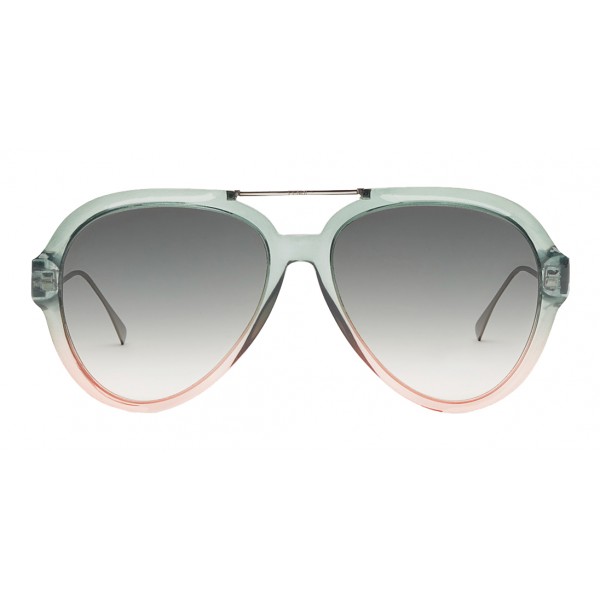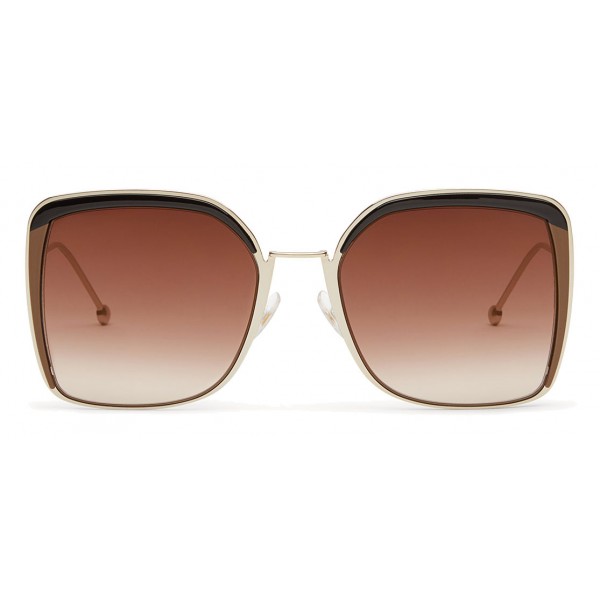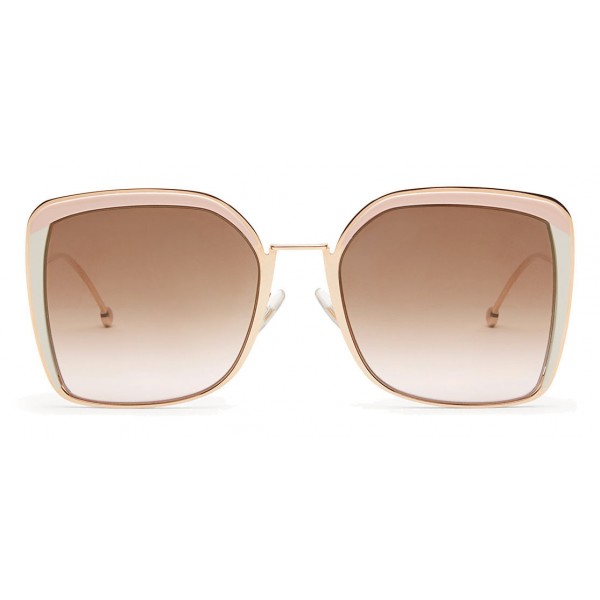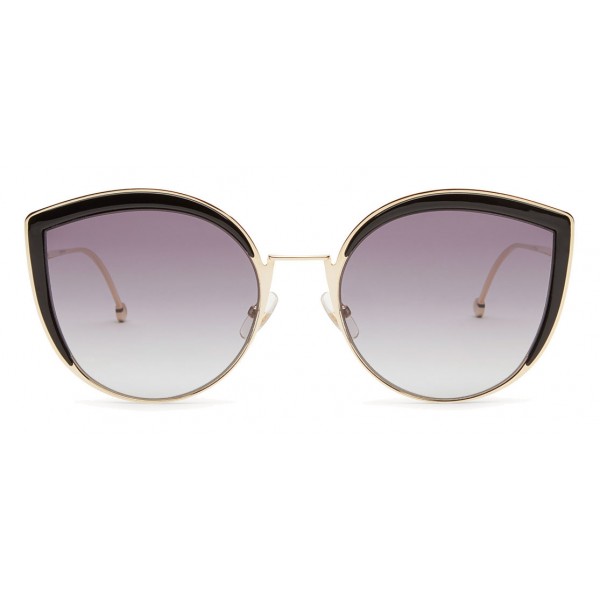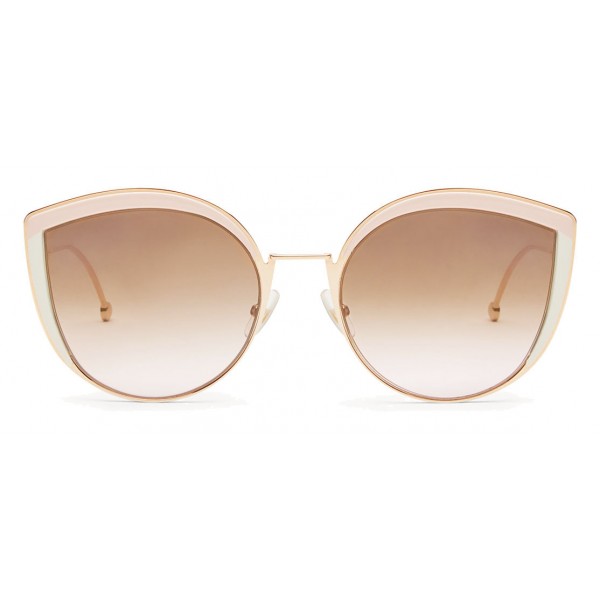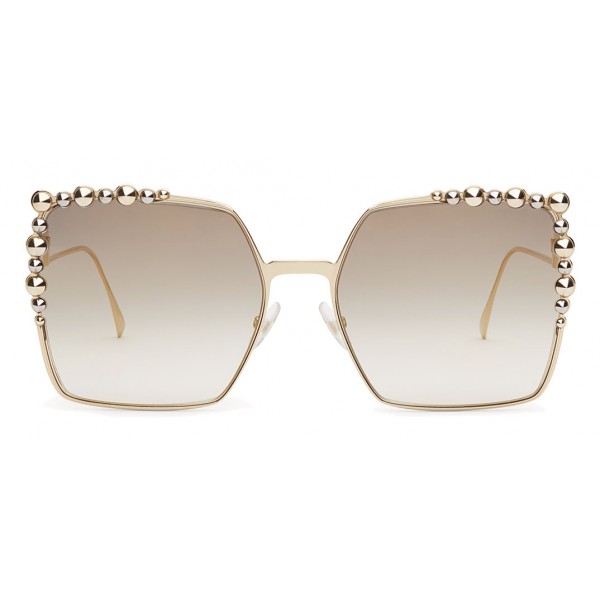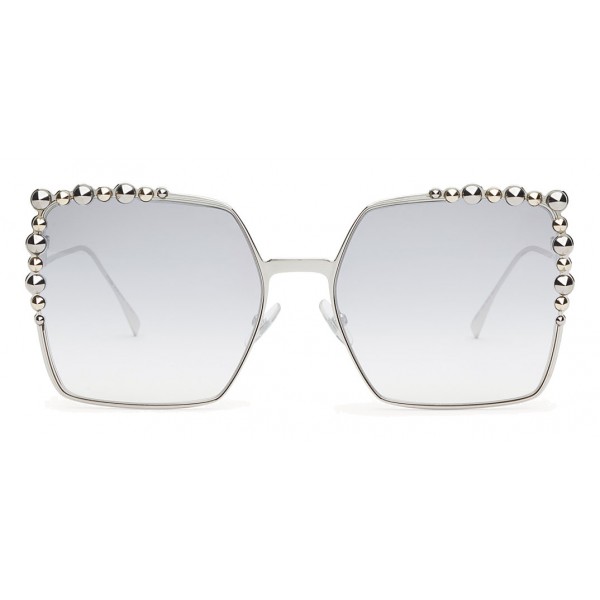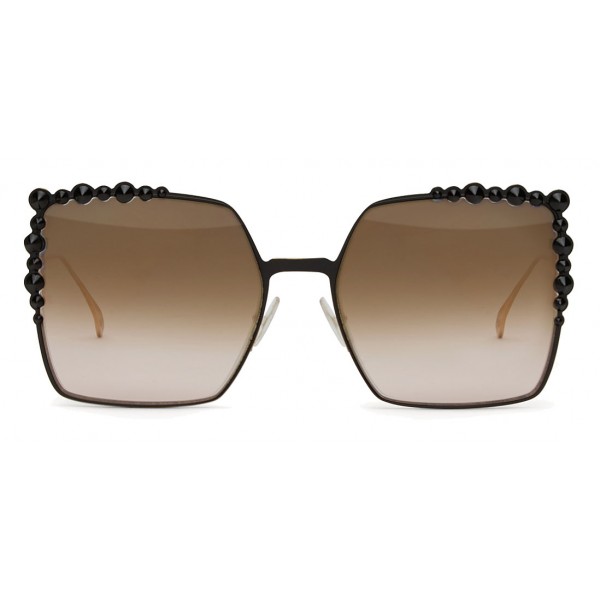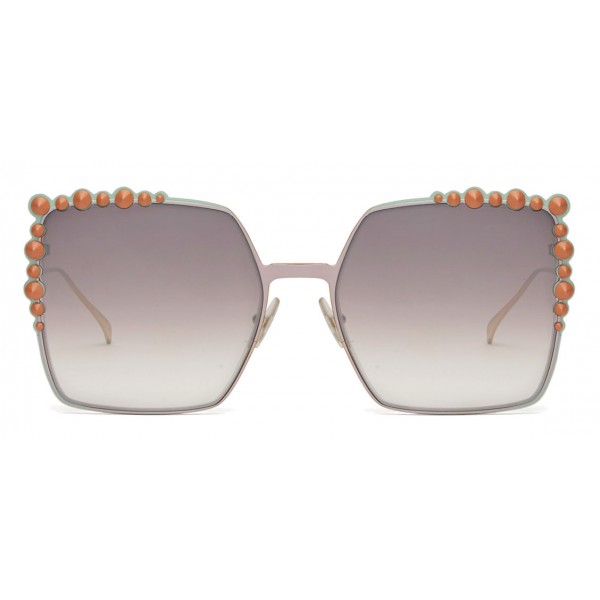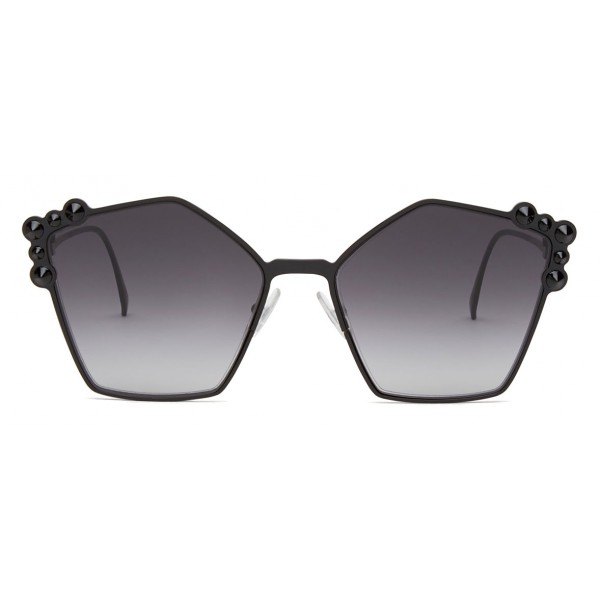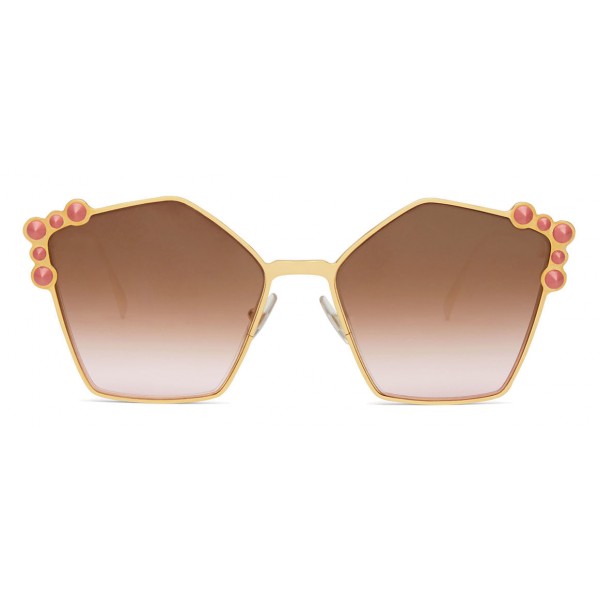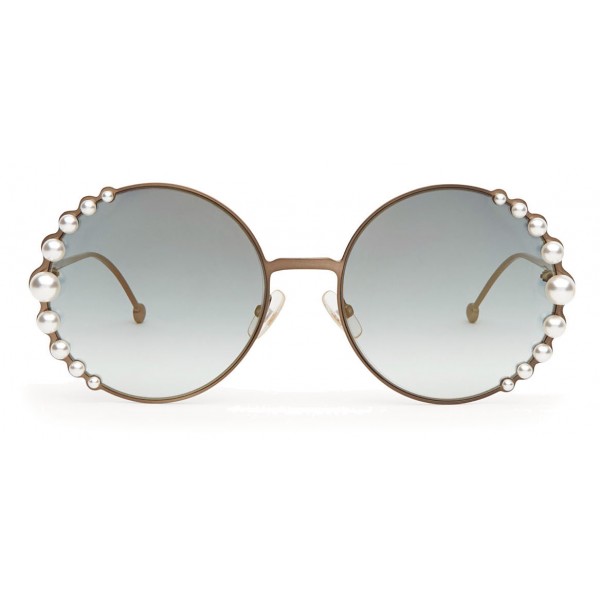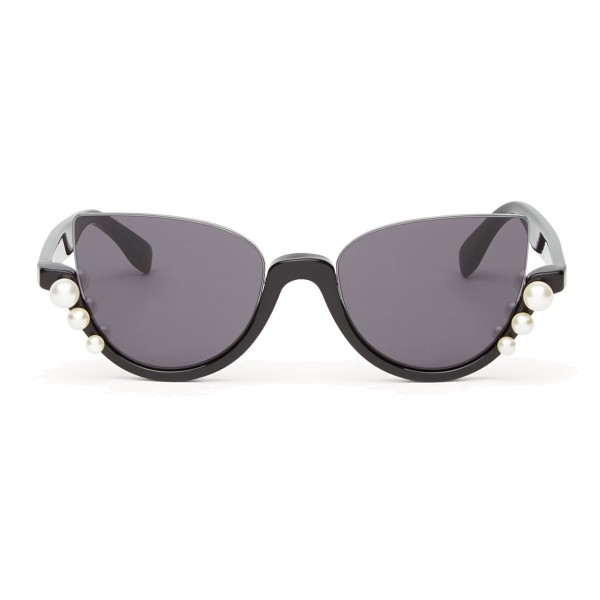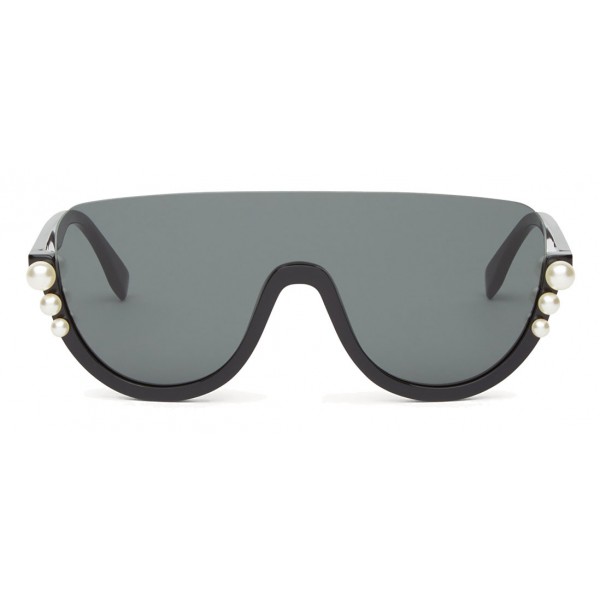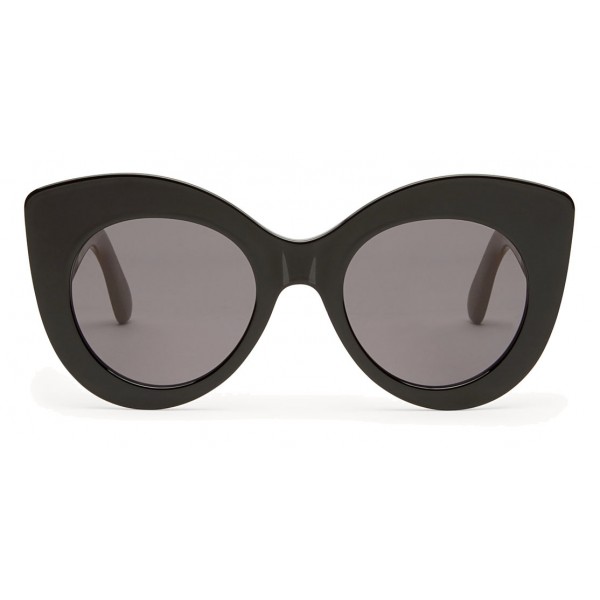No products
Categories
- Fashion Accessories
- Clothing
- Beauty & Lifestyle
-
Hi-Tech & Lifestyle
- Gaming
-
Case
- iPhone 11 Pro
- iPhone 11 Pro Max
- iPhone 11
- iPhone X / XS
- iPhone XS Max
- Samsung S10 / S10+ / S10e
- Huawei P30 / P30 Pro / P30 Lite
- Huawei P20 / P20 Pro / P20 Lite
- iPhone XR
- Samsung S9
- Samsung S9+
- iPhone 8 / 7
- iPhone 8 Plus / 7 Plus
- Samsung S8
- Samsung S8+
- Samsung S7
- Samsung S7 Edge
- iPhone 6 / 6 s
- iPhone 6 Plus / 6 s Plus
- iPhone 5 / SE
- Skin
- Audio
- Smart Home
- Drones & Hoverboard
- Photo & Video
- Desk Supplies
- Accessories
- Games
- Beverages
- Food
- Home
- Jewelry
- Luxury
- Travel
- Art
- Footwear
- Vintage Fashion
- Restaurants
- Sport
- Animals
- Gift Ideas
- Kidswear
Extra
Viewed Products
-

Mikol Marmi - Howlite Gemstone Marble Beaded Bracialet - Real Marble - Mikol...
Howlite beaded bracelet is designed...
Fendi
Founded in 1925 in Rome
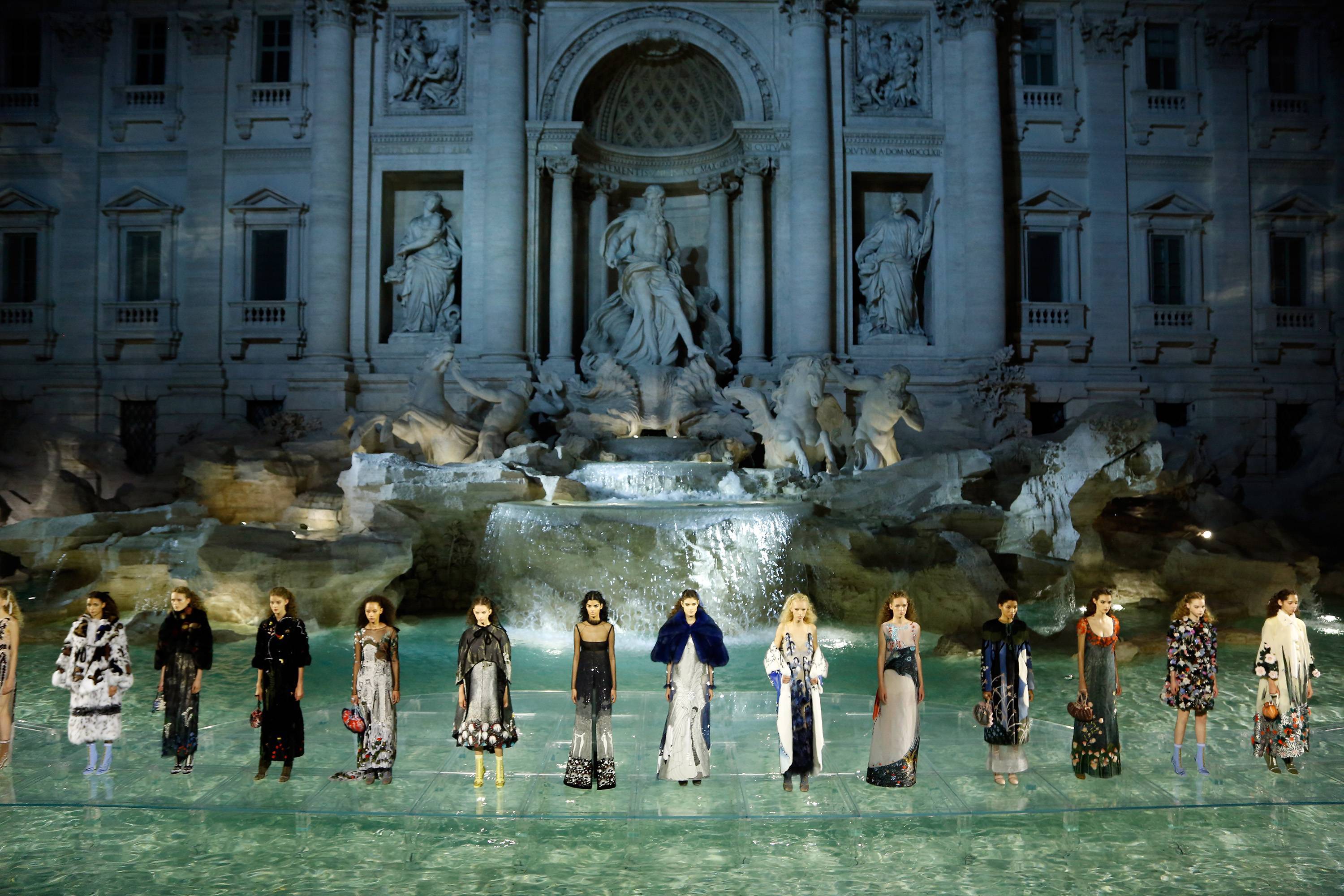
Identity
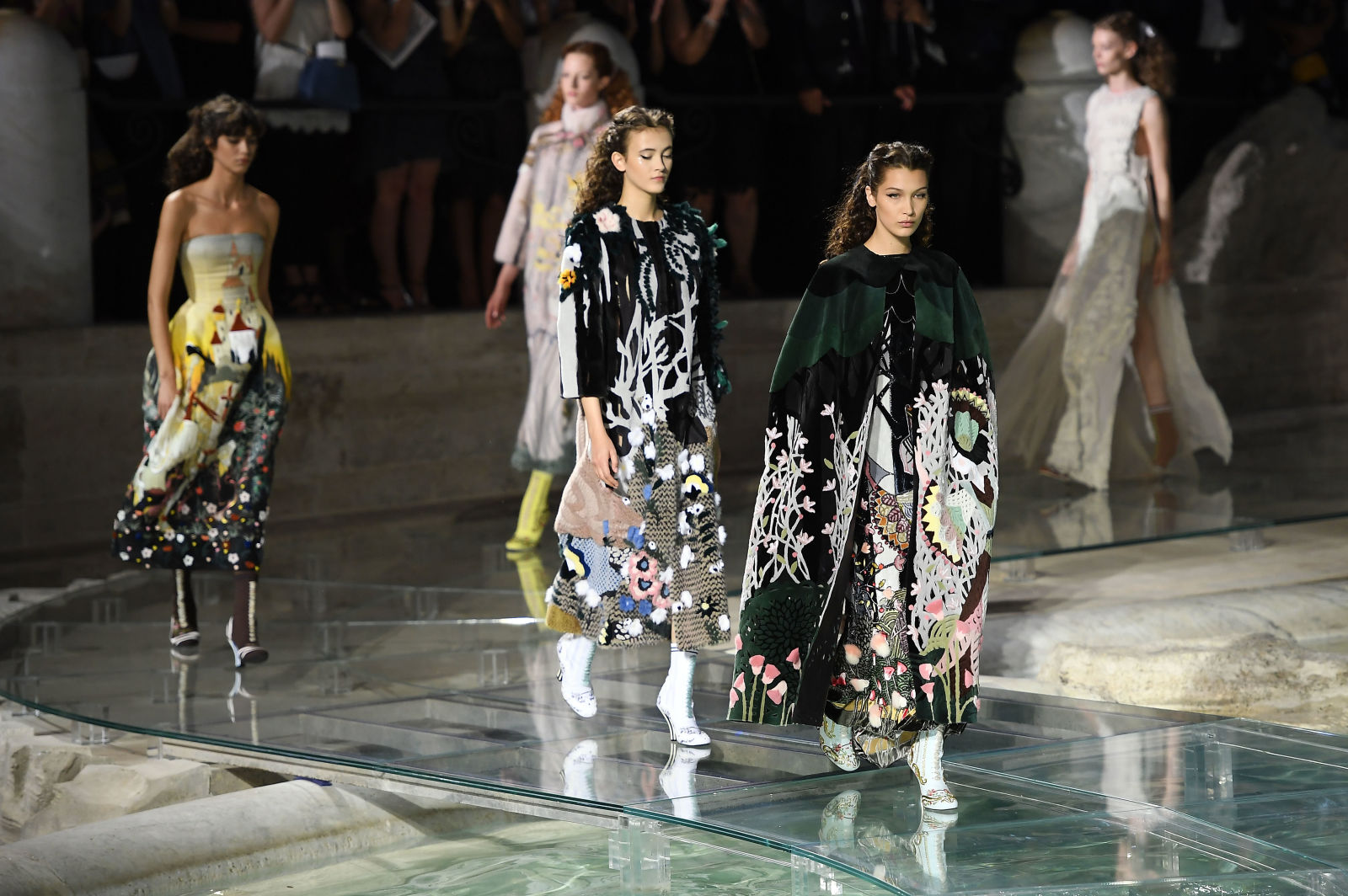
To explain the Fendi fashion house a mathematical theorem would perhaps be necessary, in which tradition and innovation, craftsmanship and freedom of creativity are wisely dosed as a guarantee of a success never taken for granted, following the idea that nothing is impossible. - Silvia Venturini Fendi
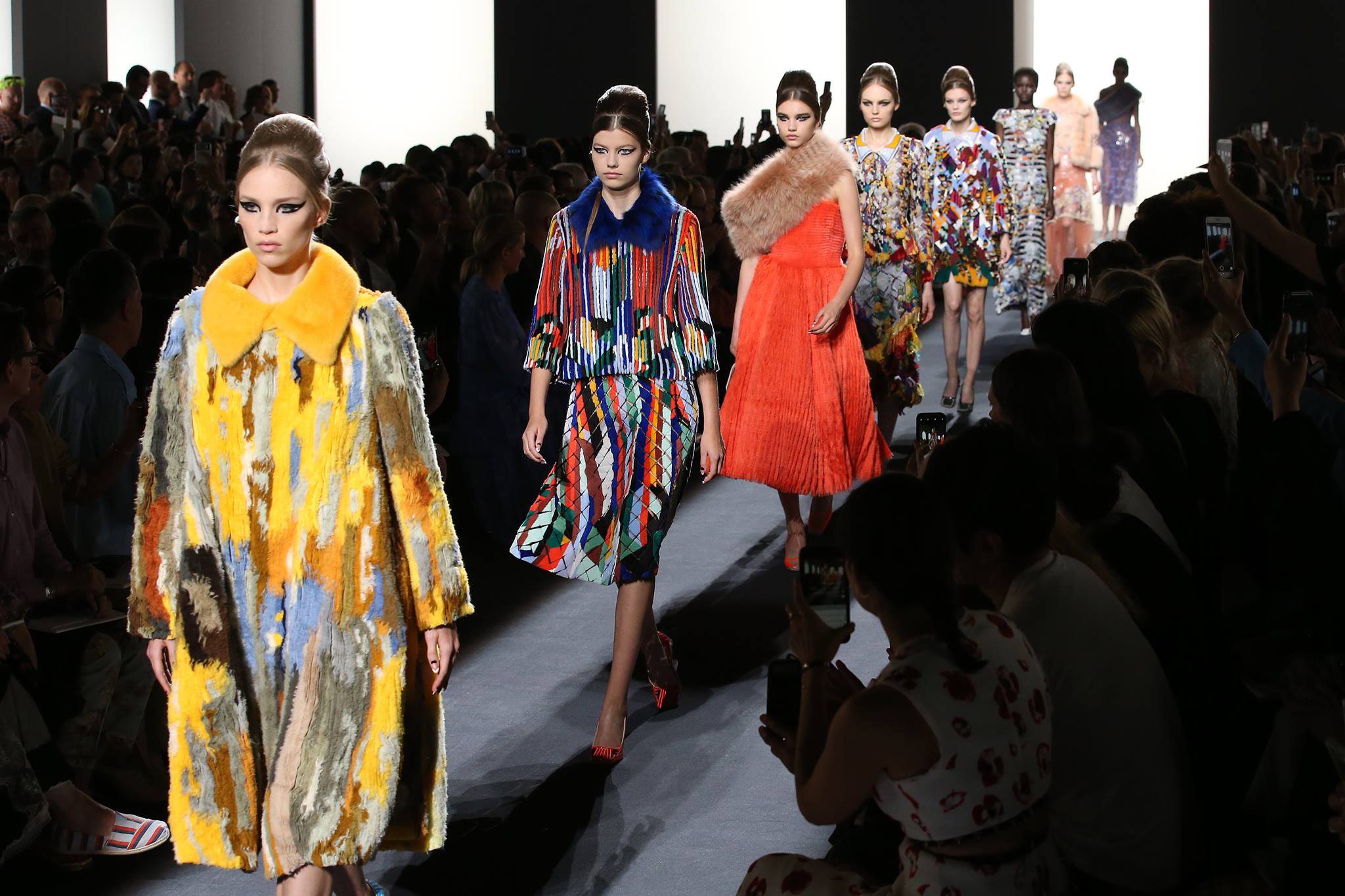
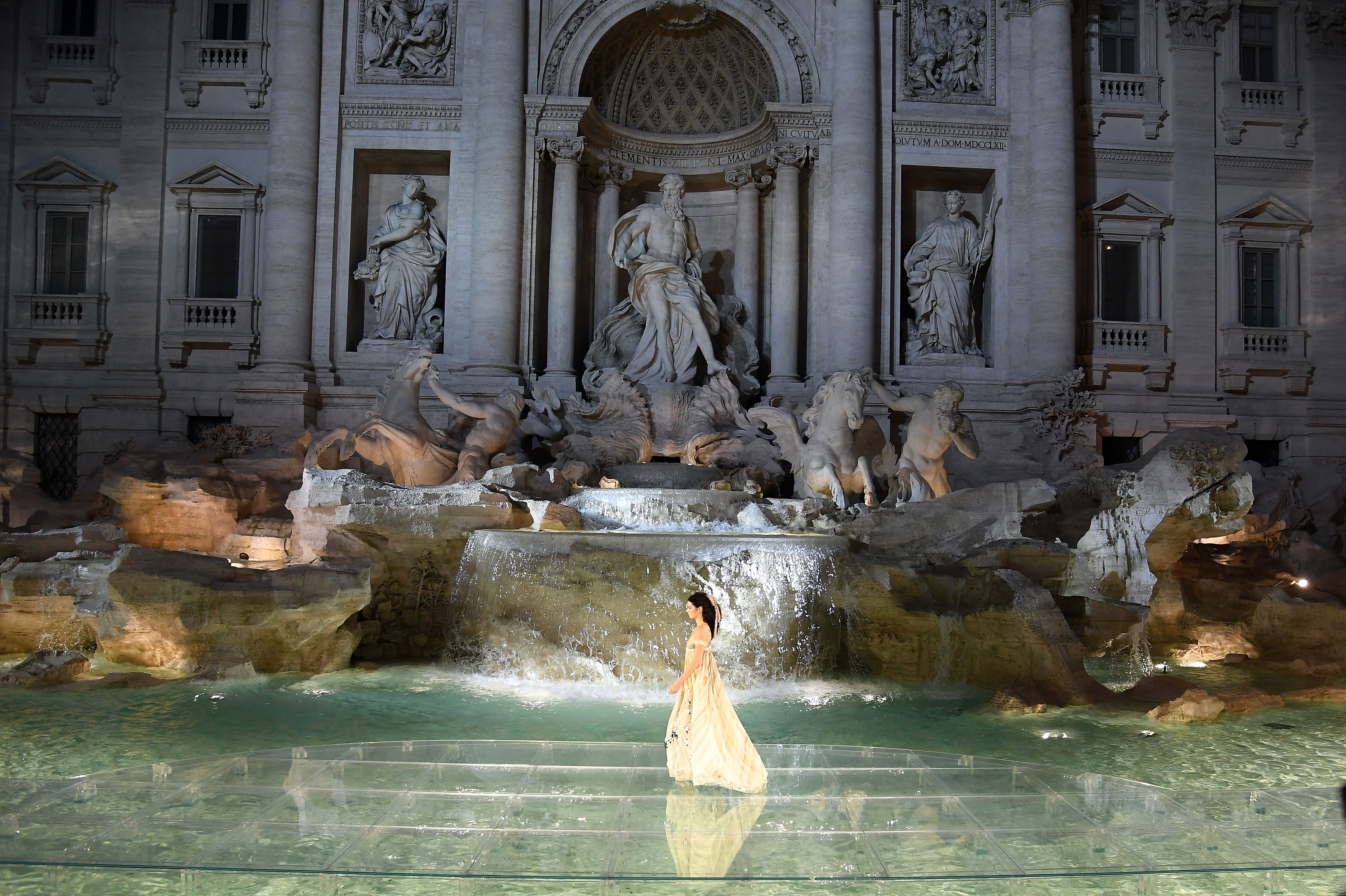
The Fendi adventure began in 1925 on Via del Plebiscito, a busy street whose location in the heart of Rome made it a main thoroughfare used by the transalpine aristocracy.
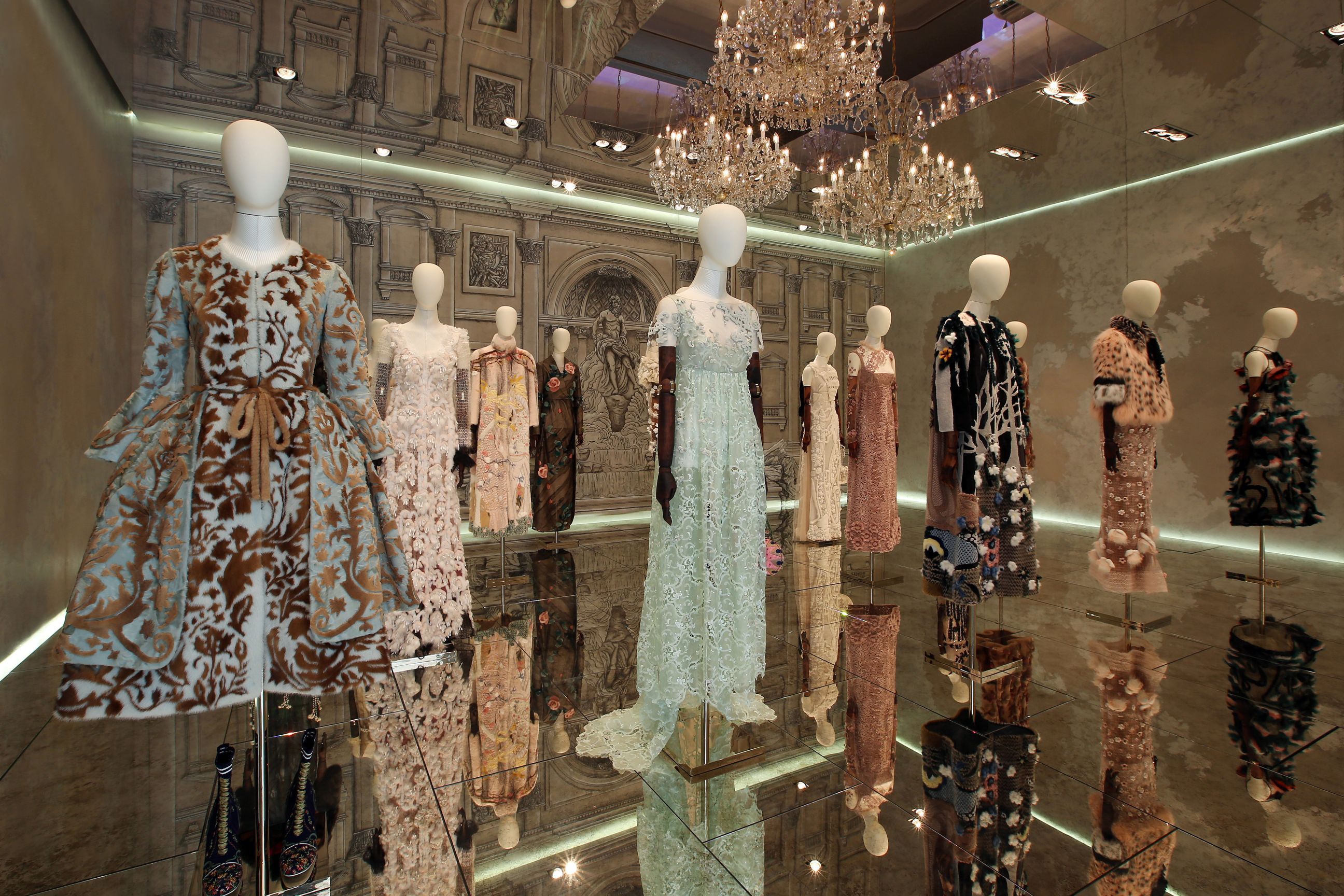
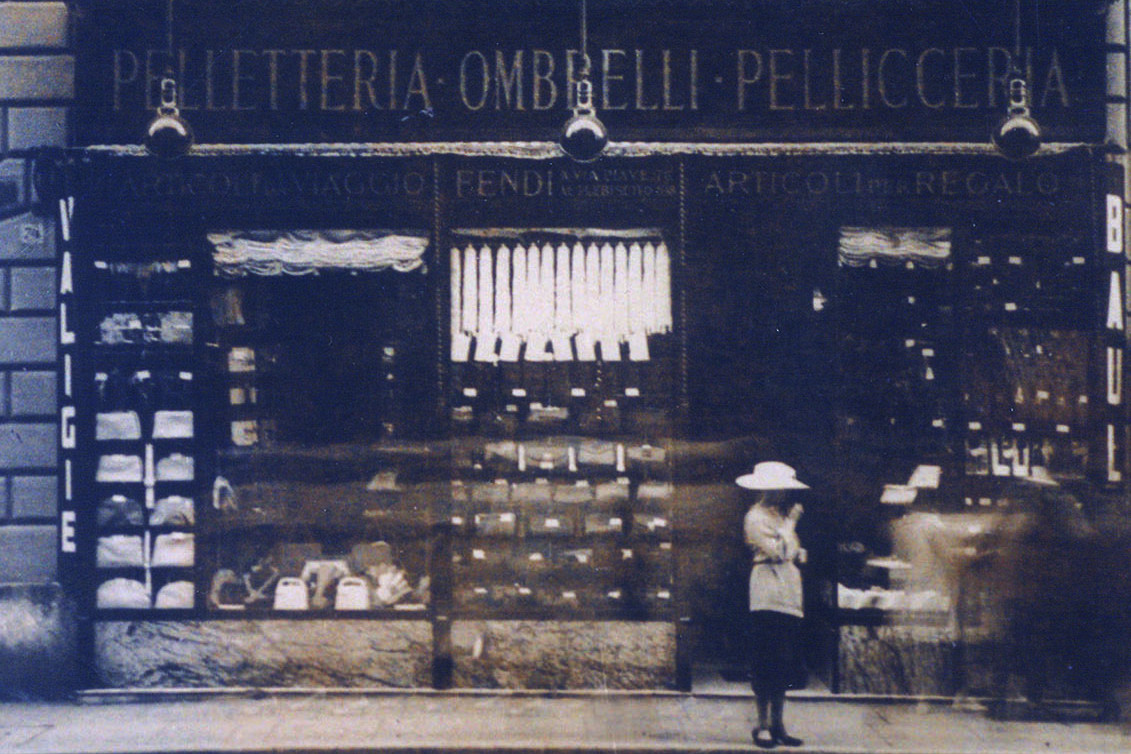
Adele and Edoardo Fendi opened a small and medium leather goods shop and set up what was then a secret fur workshop.
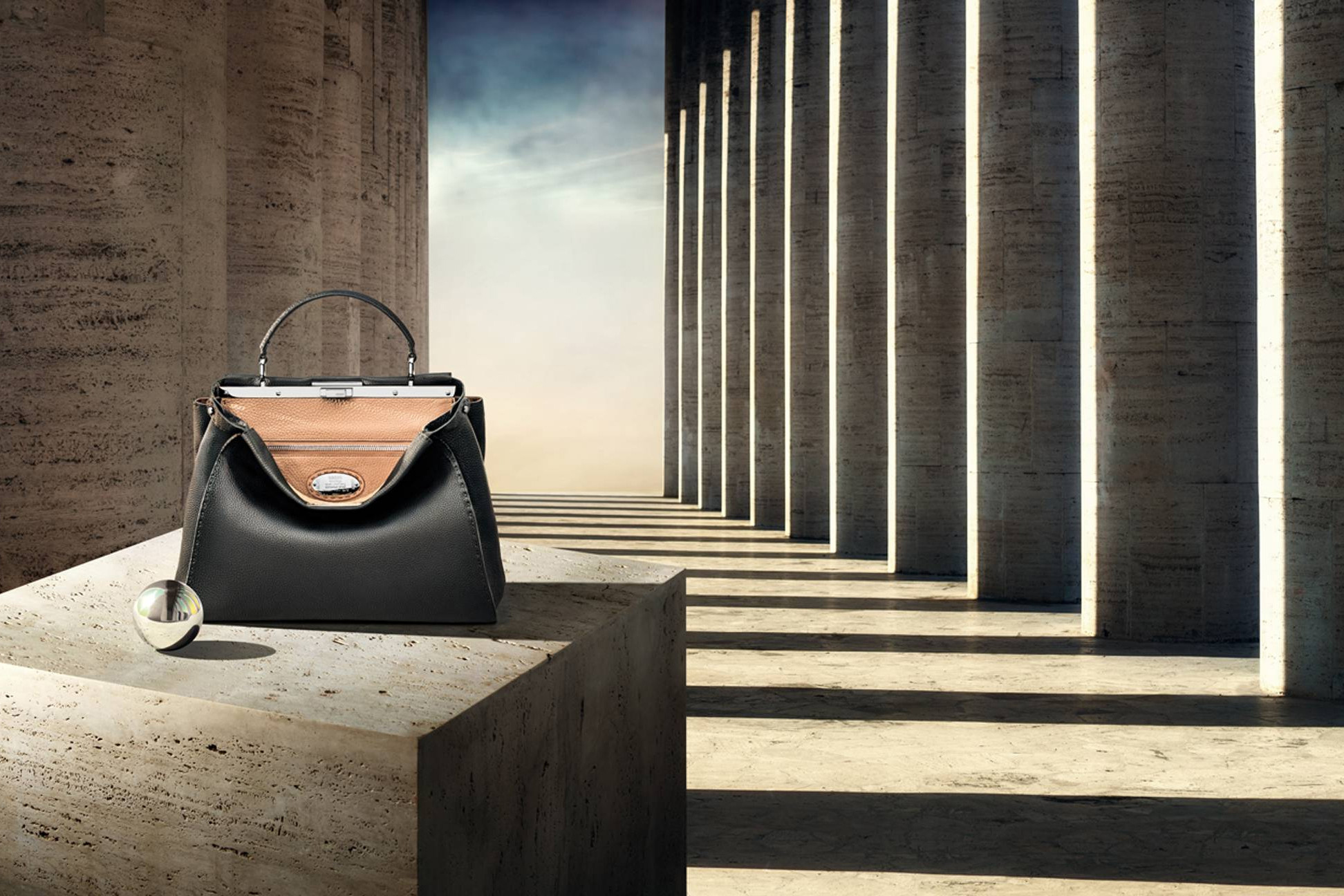

The shop was set in an area through which nobility would ride on their way to excursions by the sea, and Adele, watching the passing carriages, was inspired by the horse’s beautiful saddles and bridles to create a line of handbags using those same techniques.
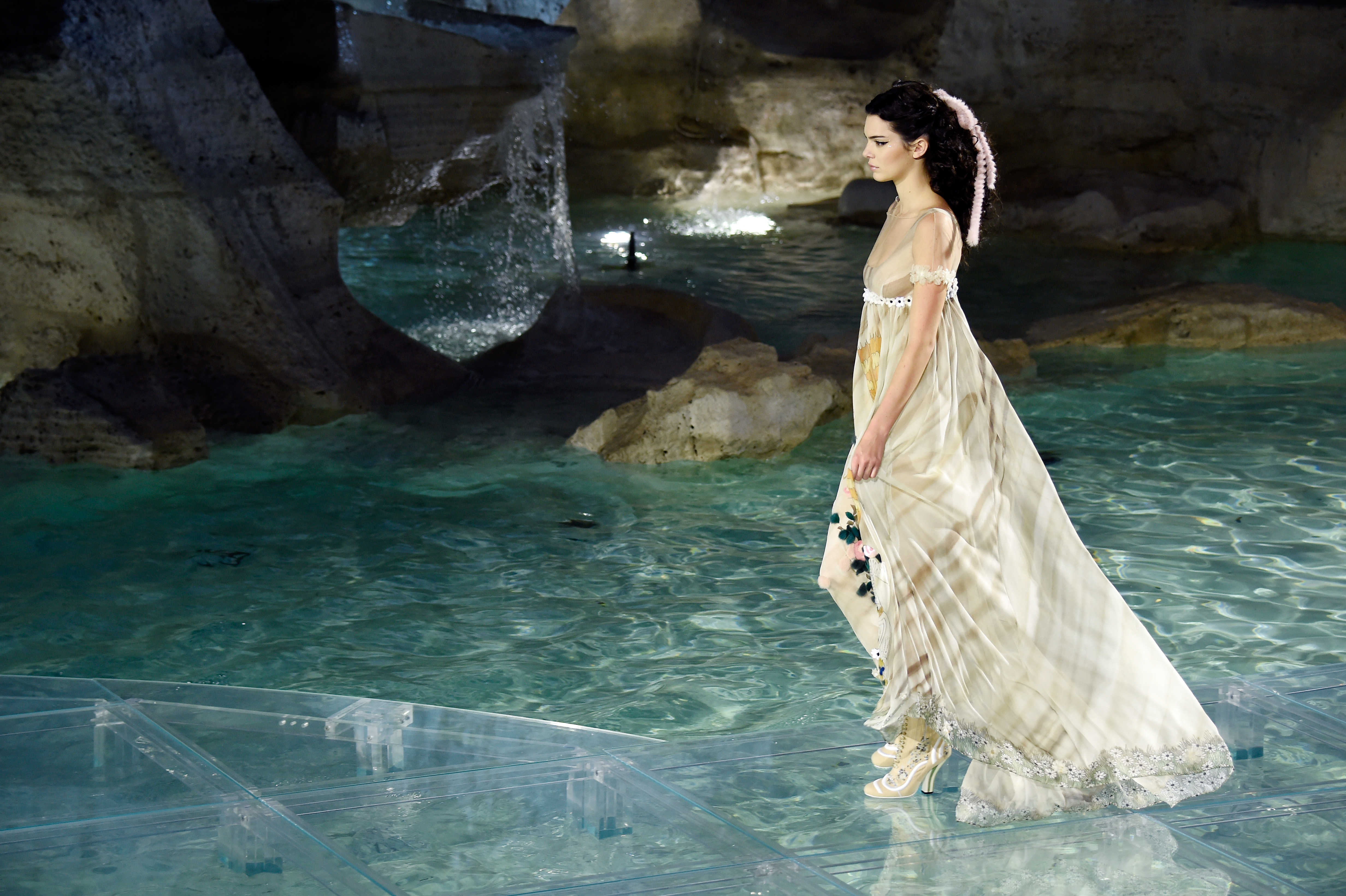
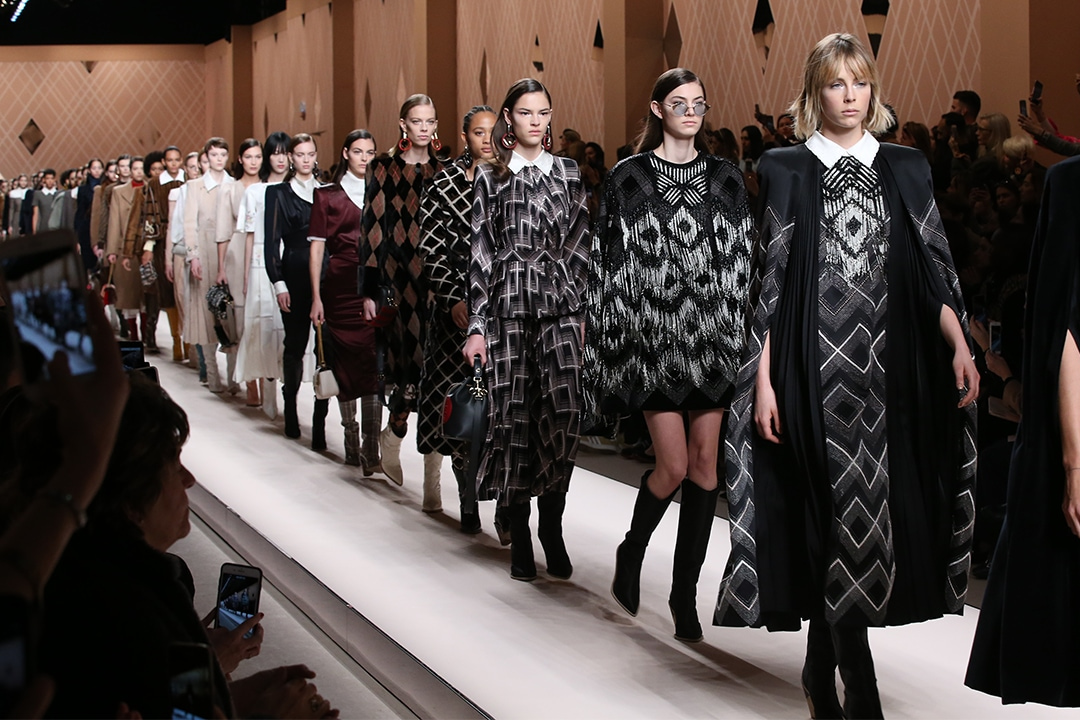
Success came quickly, already in the 30s the finest furs and leather accessories of the Fendi laboratory reached international fame thanks to the rich ladies in visit to the Eternal City who had a penchant for Italian craftsmanship.


The success was confirmed when their five daughters, Paola, Anna, Franca, Carla and Alda, decided to get involved in the family business bringing new energy and ideas.
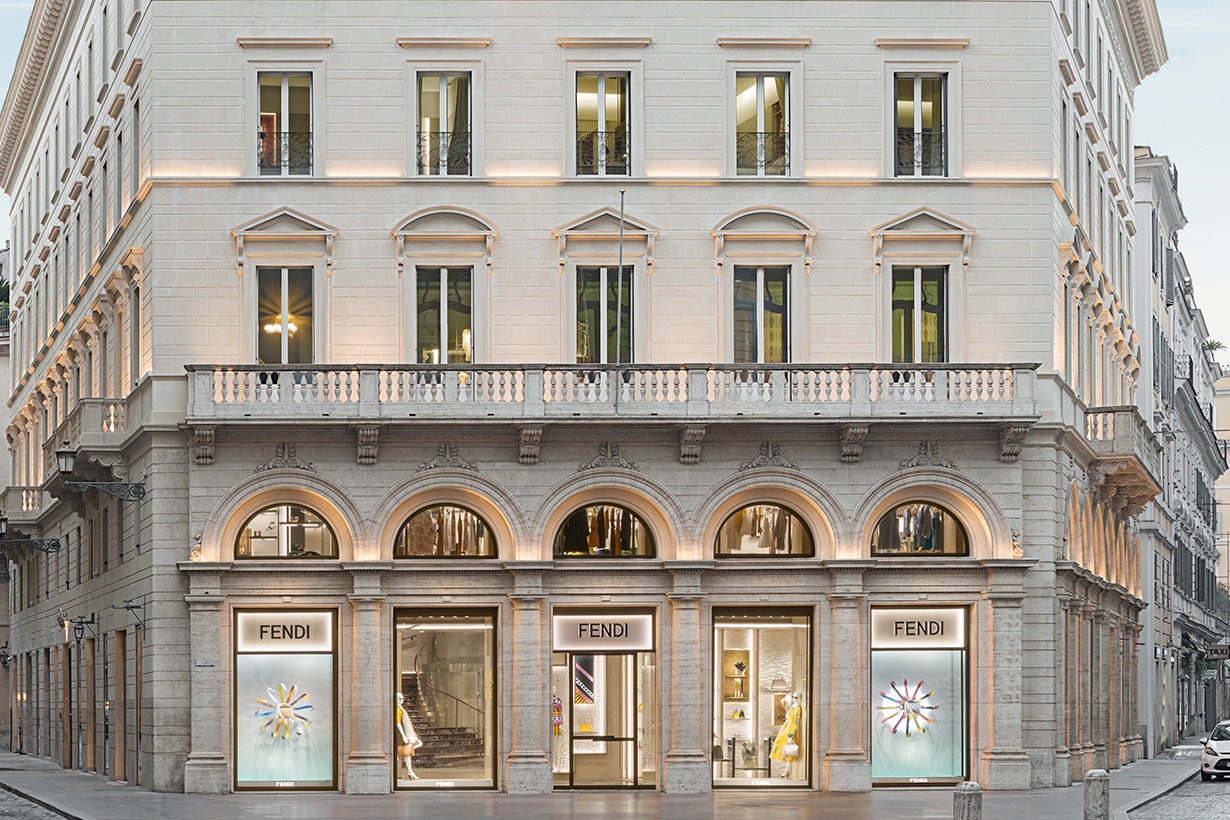
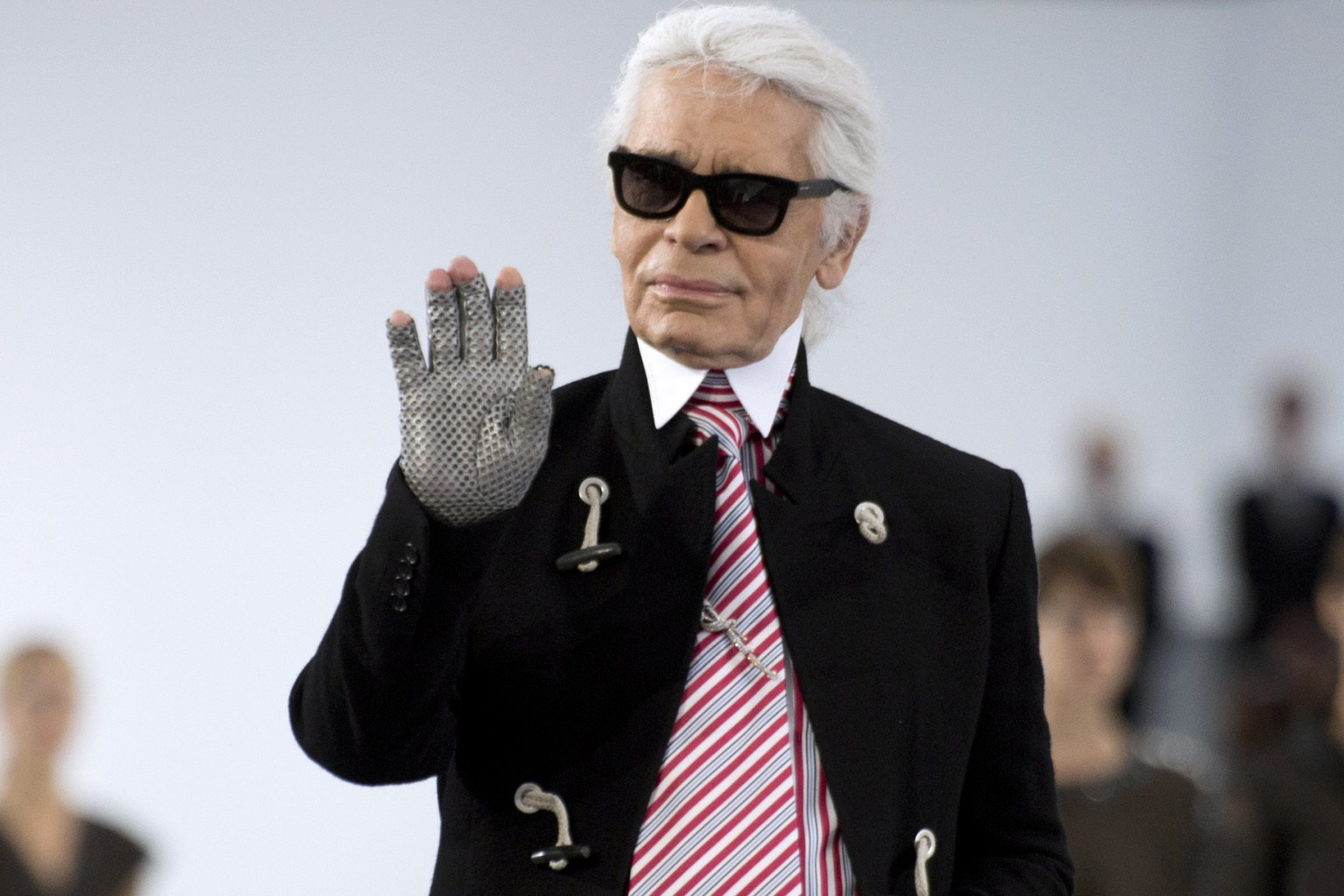
Nicknamed the five fingers of the hand, it was they who, in 1965, invited a young German designer to join the House. His name: Karl Lagerfeld!
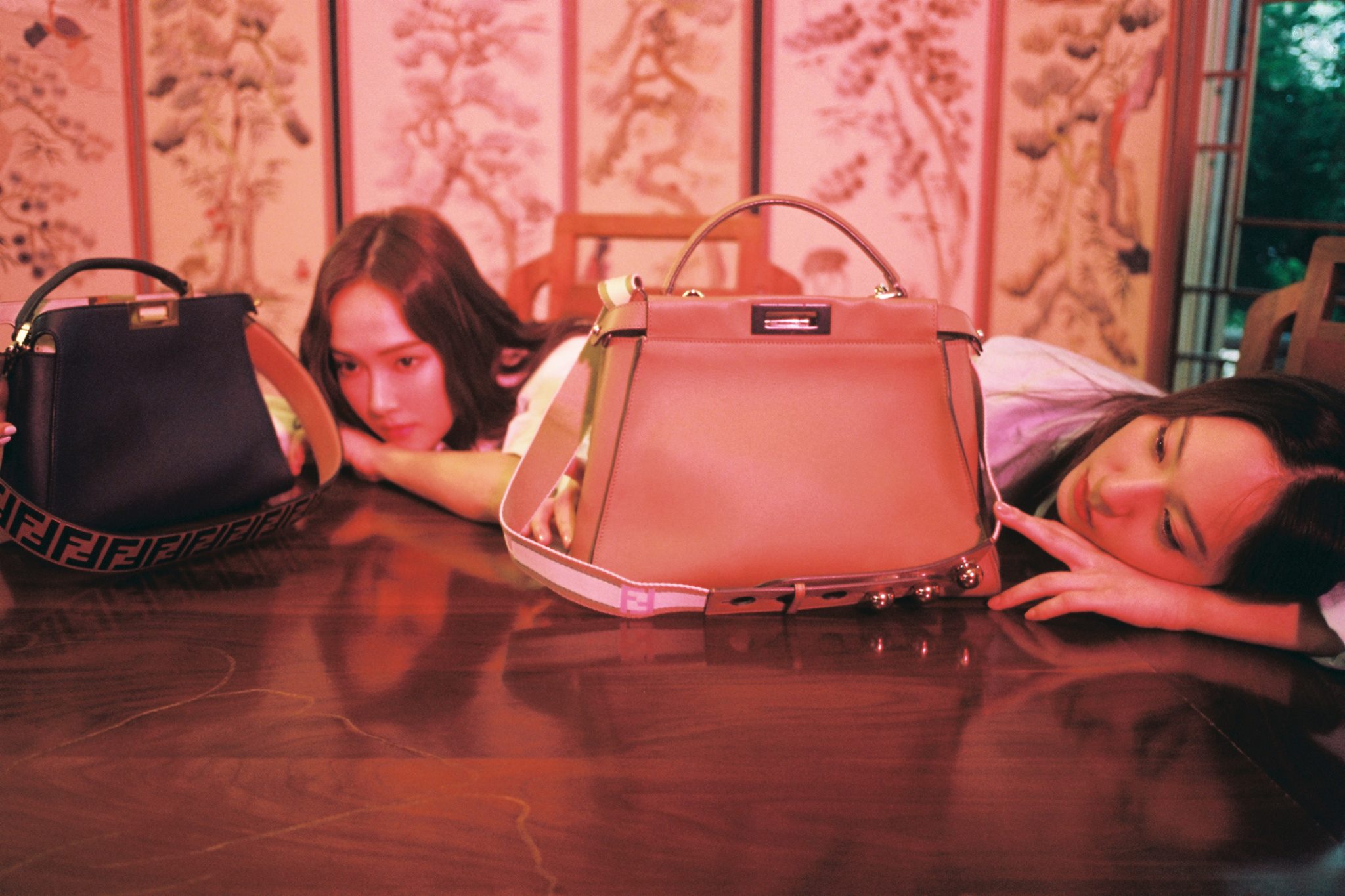
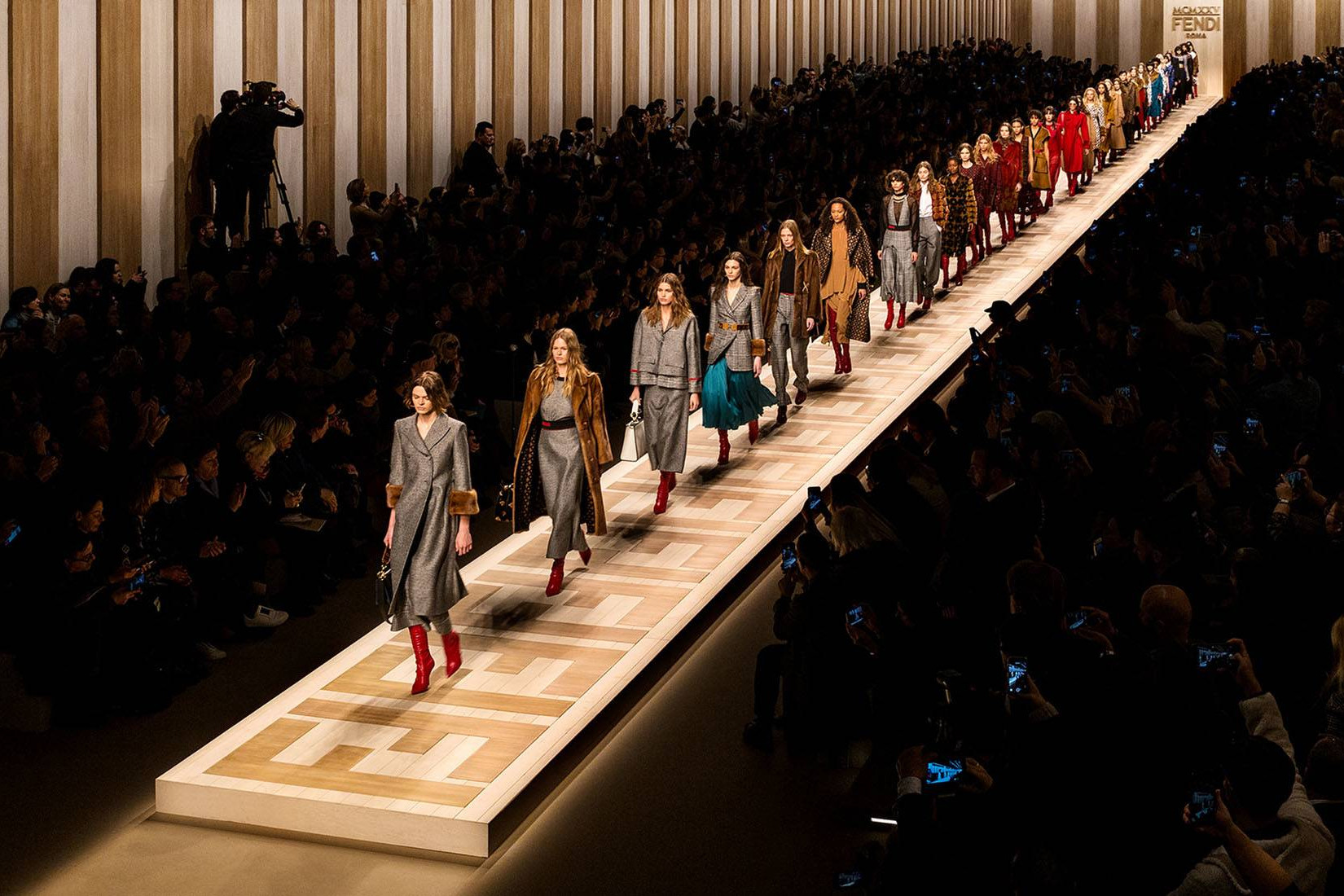
A year later came the double F logo originally used as invisible lining for luggage, which today has become a symbol of luxury and exhibited with pride among the most significant examples of the phenomenon of logo mania.

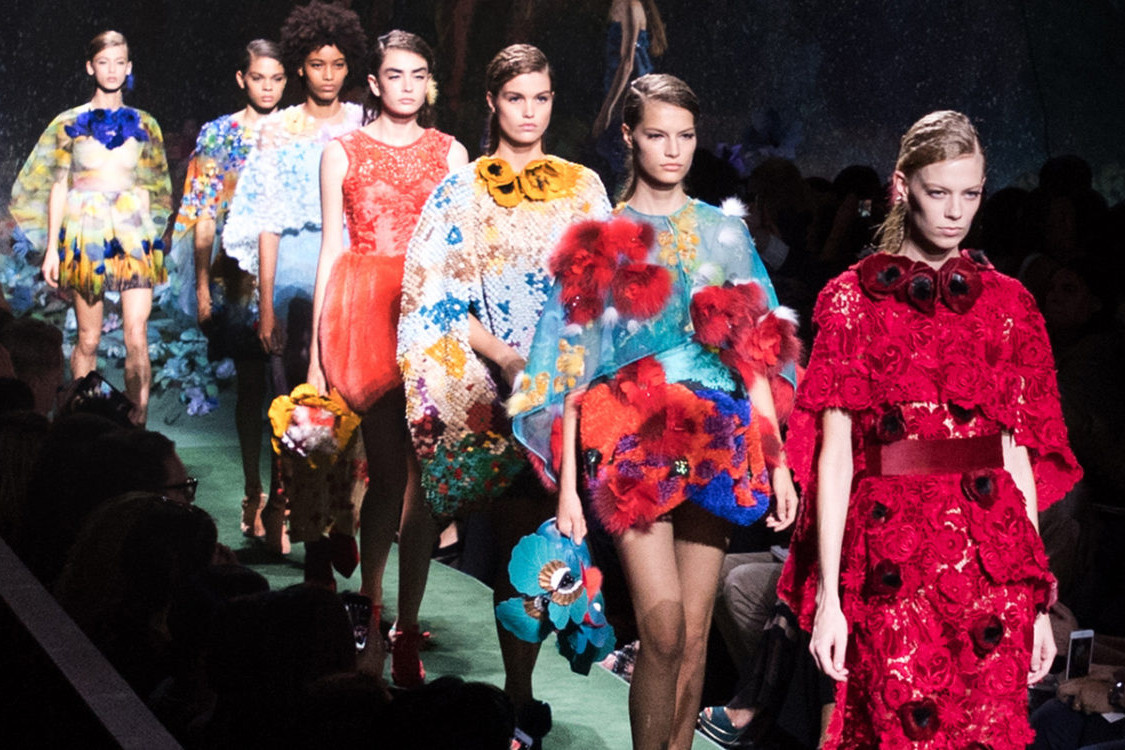
After revolutionizing how to wear fur by fully reinterpreting it, transforming it into a fashionable, soft, light item of clothing, Karl Lagerfeld launched the House’s ready-to-wear collection in 1977. He still provides artistic direction alongside Silvia Venturini Fendi, who represents the third generation of the family and is in charge of accessories, menswear and kidswear.
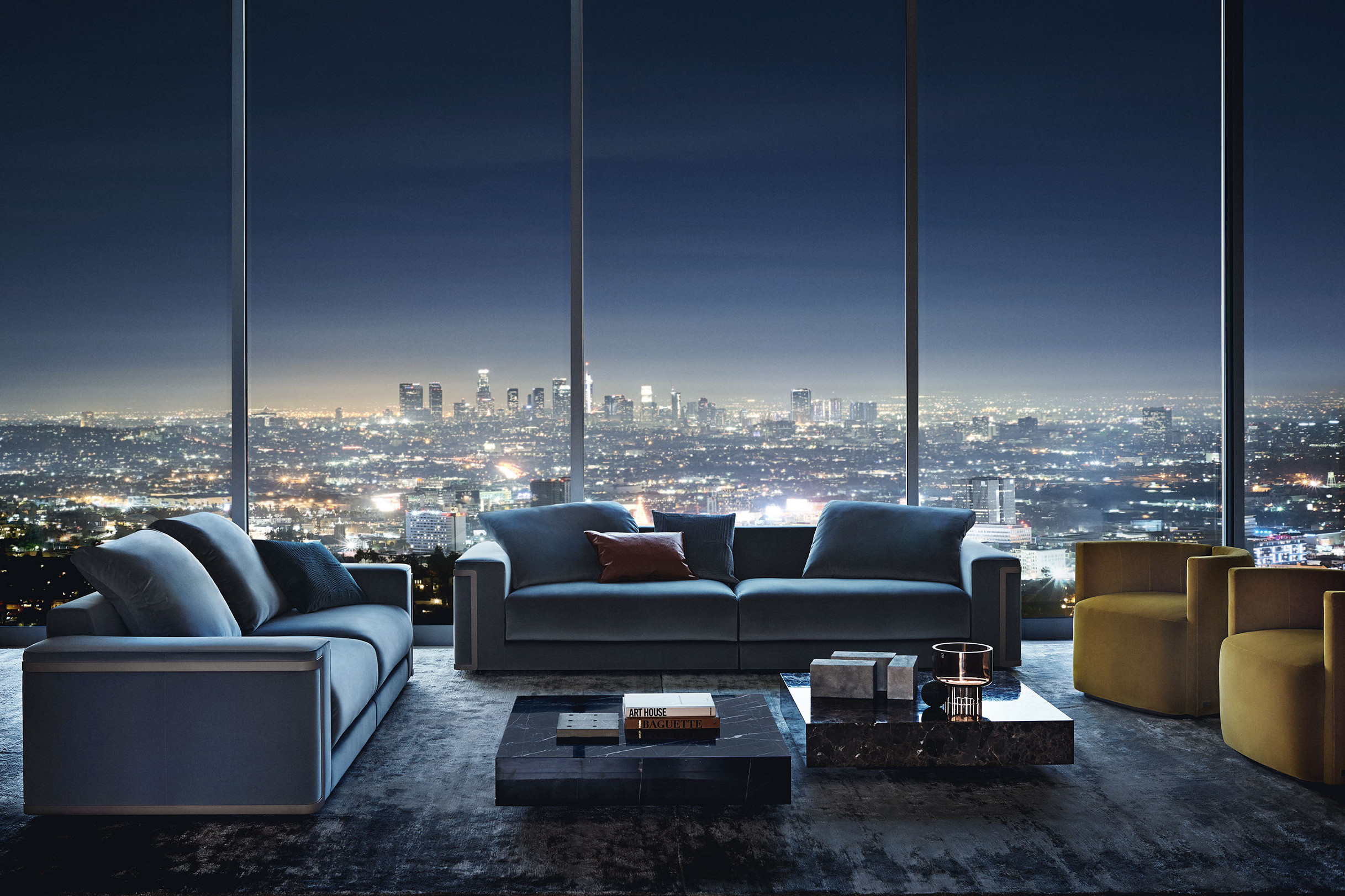
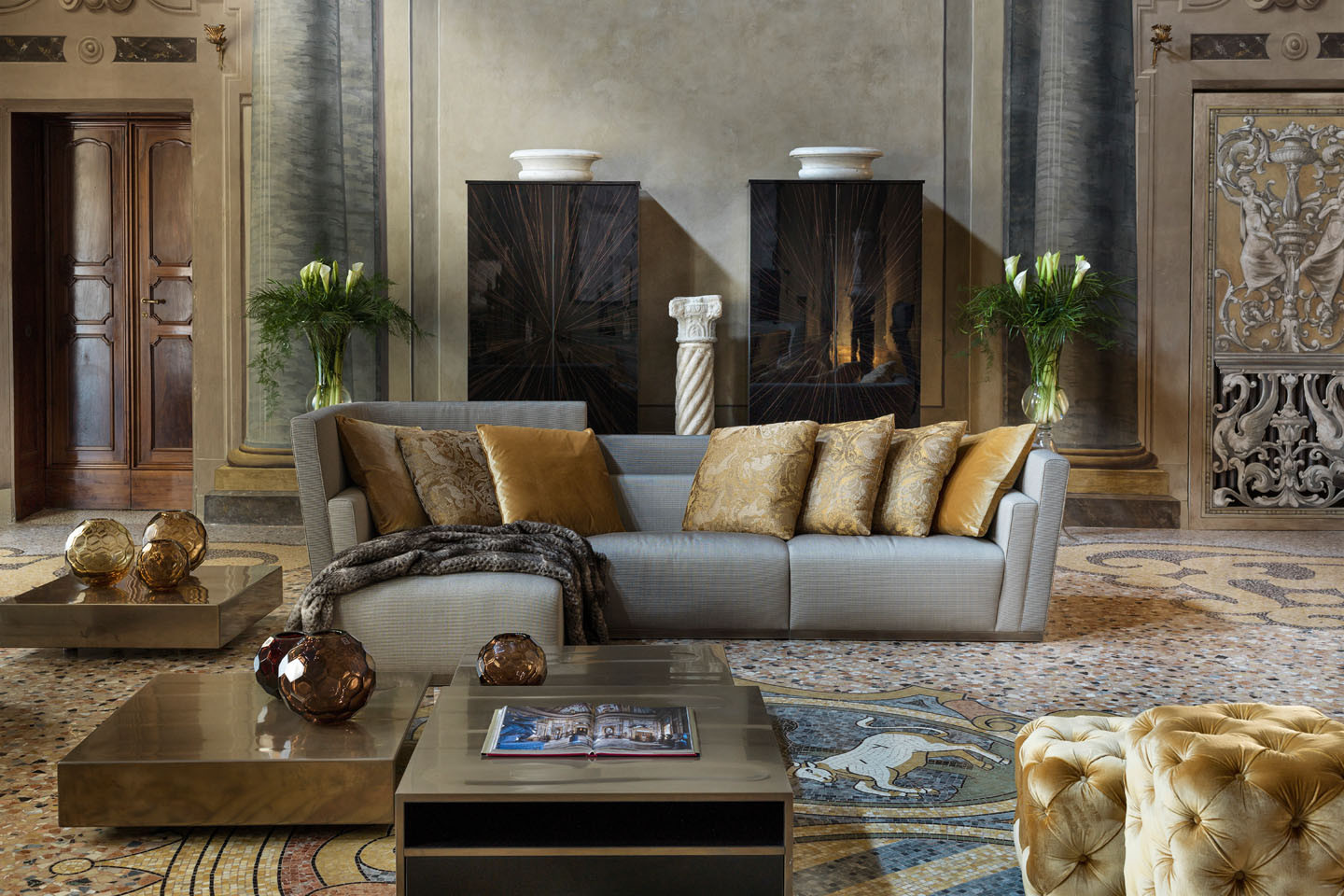
In the ‘80s Fendi emerged as a global lifestyle brand, in 1989 Fendi Casa was founded, with the aim of decorating the environments with the same perspective of the fashion lines.
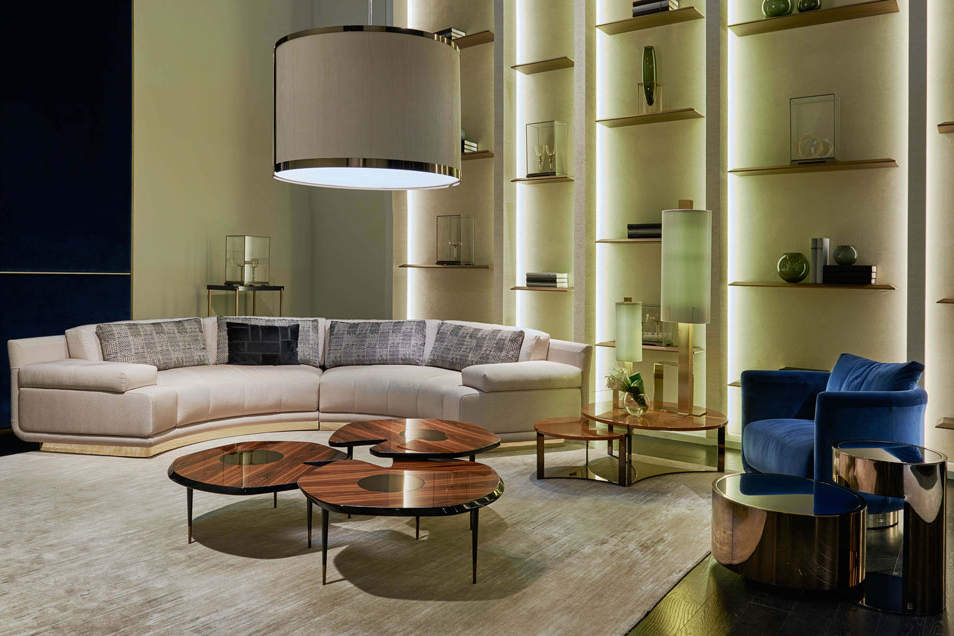
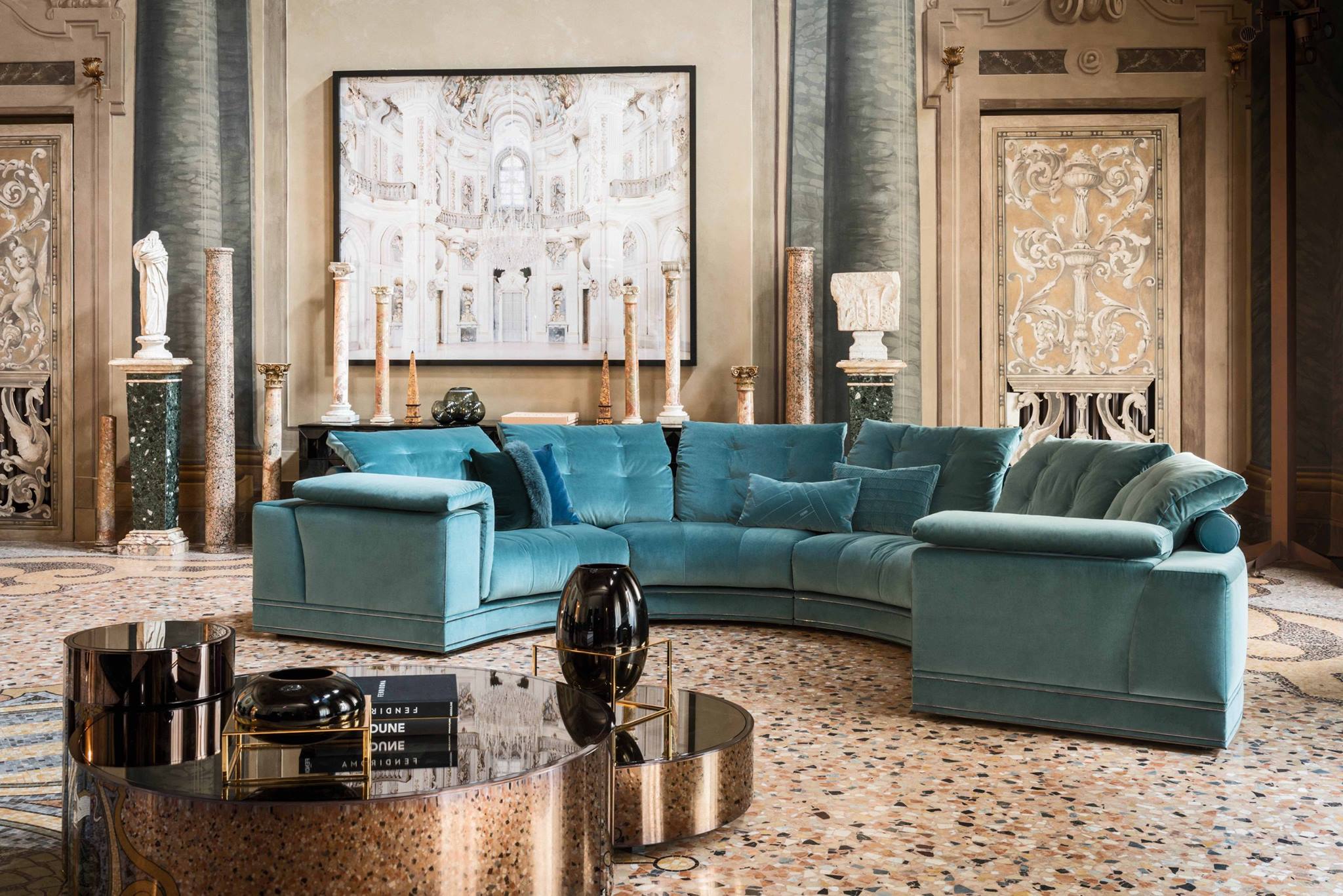
Foxes, mink, sable are so transposed into plaids and cushions, characterized by fashion details like the double F logo or the characteristic Spy Bag closing.
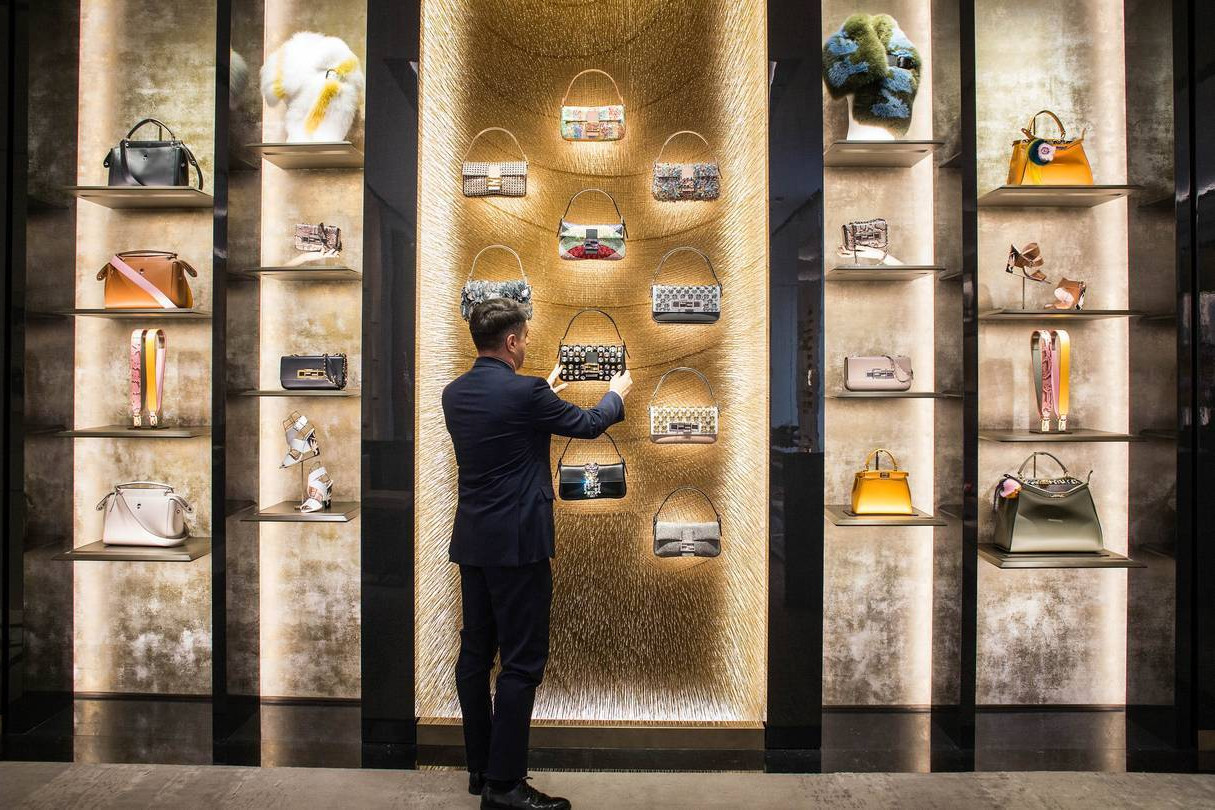
 y.jpg)
Forever associated with the Fendi image, the legendary Baguette bag and the timeless Peekaboo have helped to shape the House’s influence.
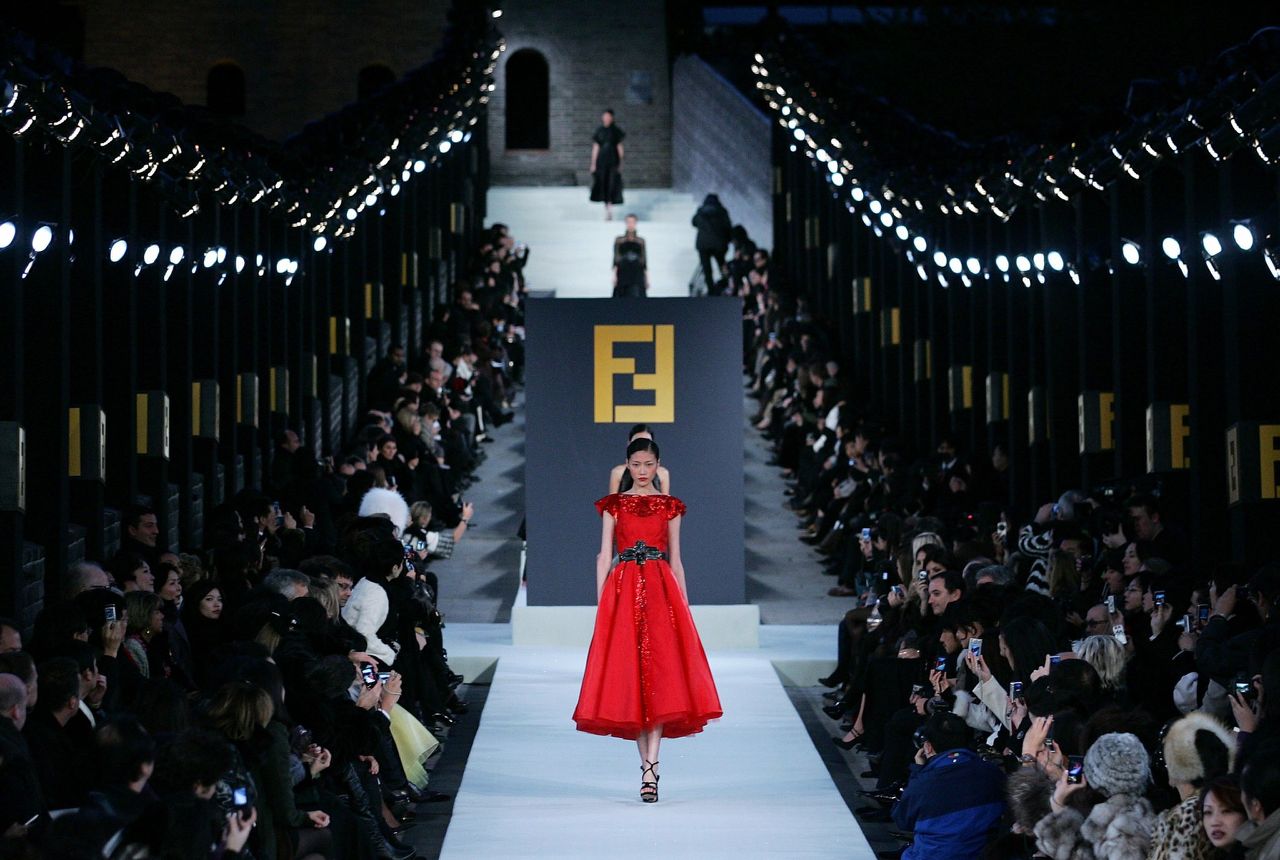
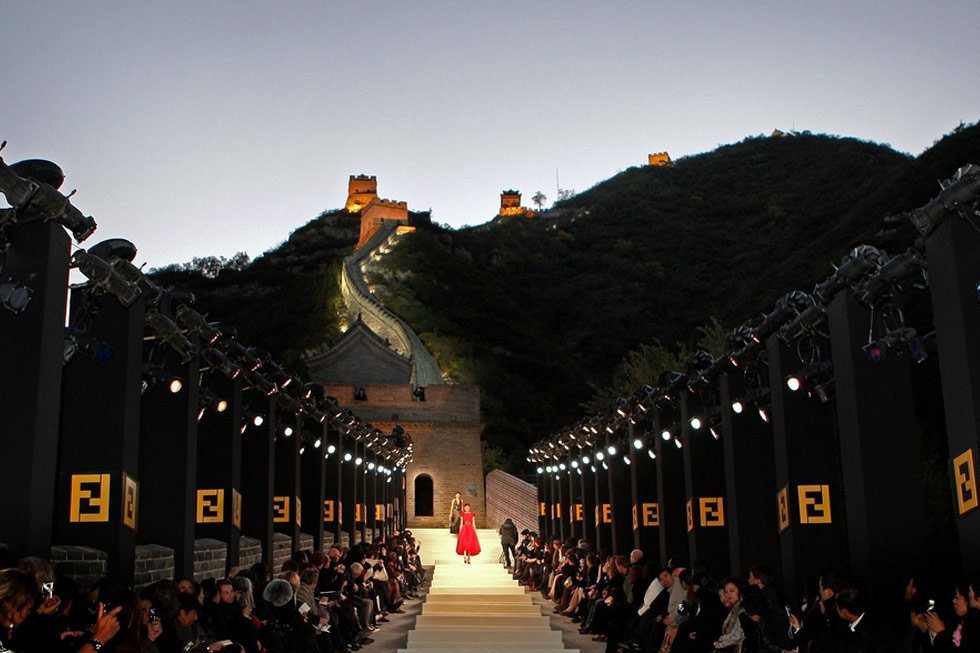
It is a reputation that even went beyond the borders of the Earth when Fendi put on a fashion show atop the Great Wall of China on October 19, 2007, making this breathtaking event the first show visible from the Moon!

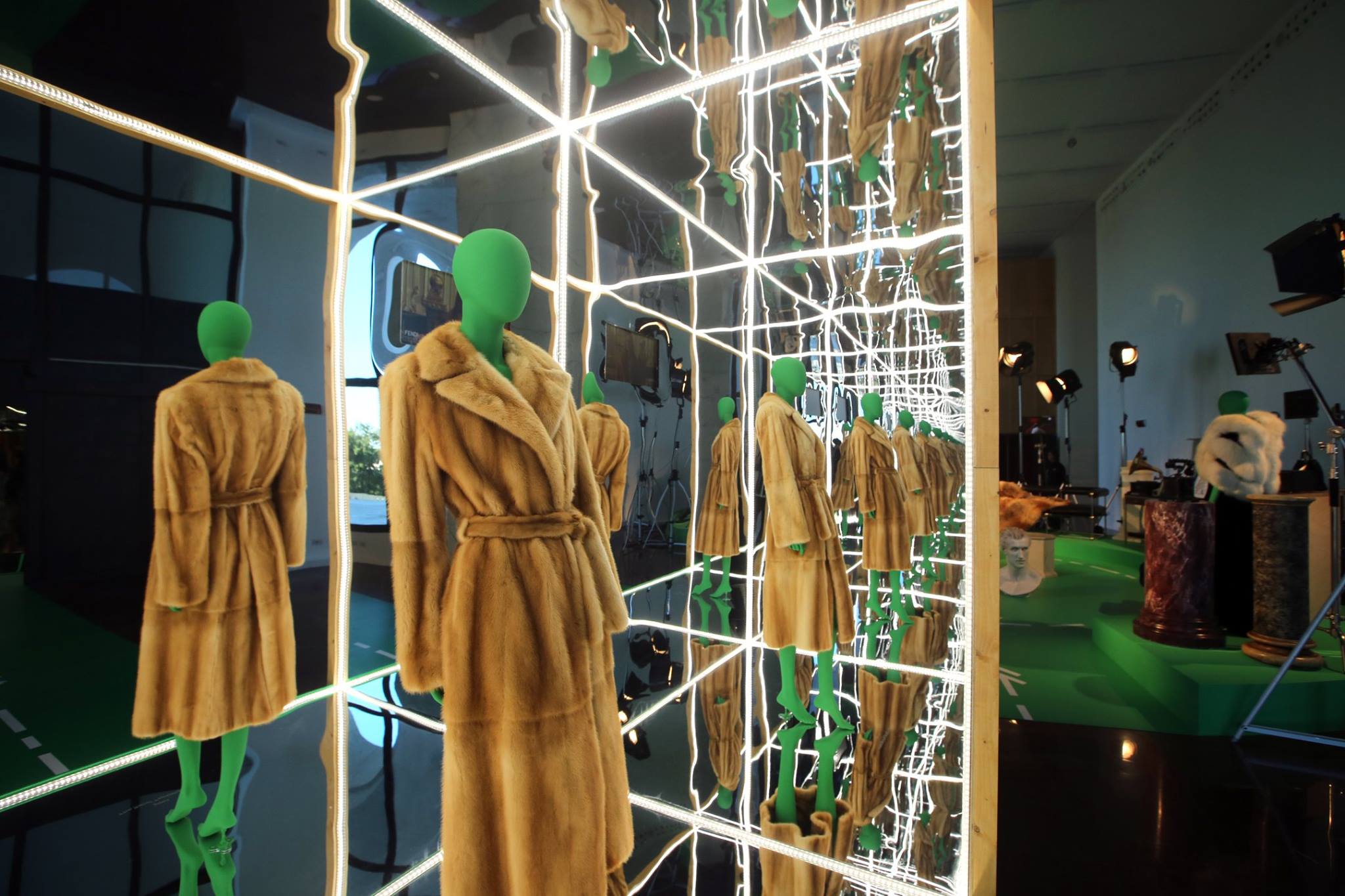
Icon
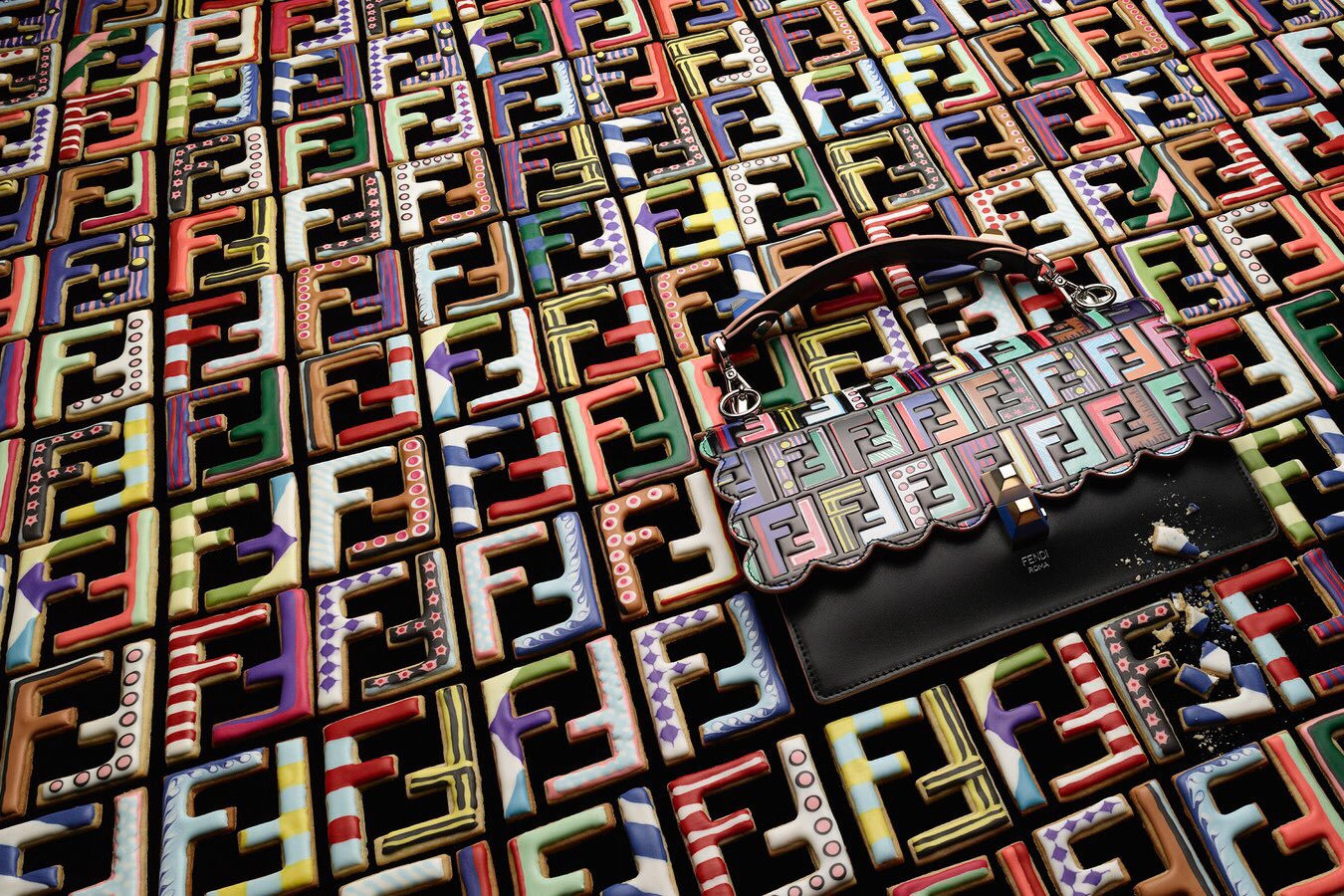
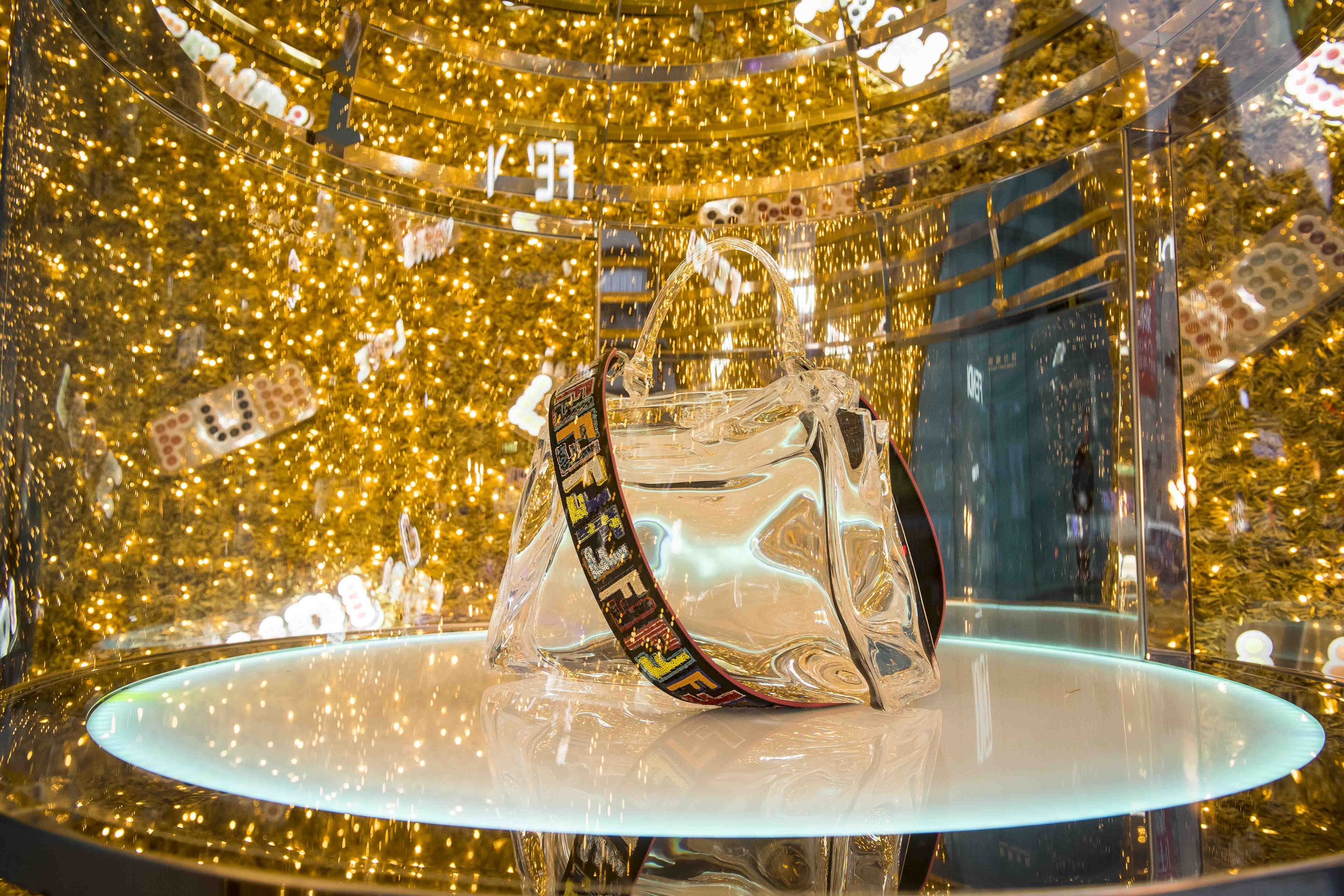
A House specialty since it was founded in 1925, working with fur is a part of Fendi's historic range of expression, being the only brand to have an inhouse fur atelier. From a social status symbol to a fashion phenomenon, this elegant staple changed under the successive guidance of Adele and Edoardo's five daughters and Karl Lagerfeld since 1965.
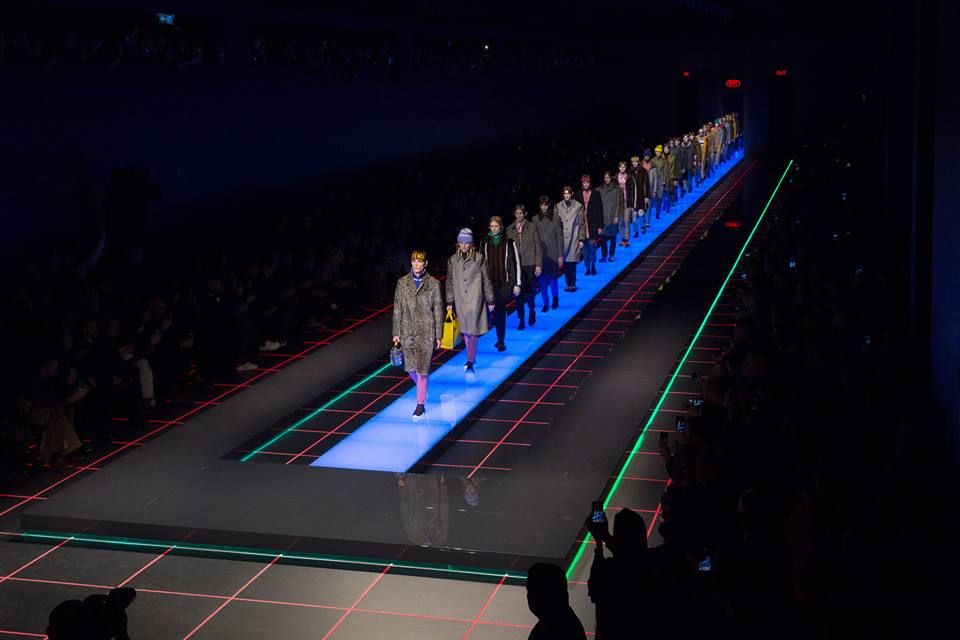
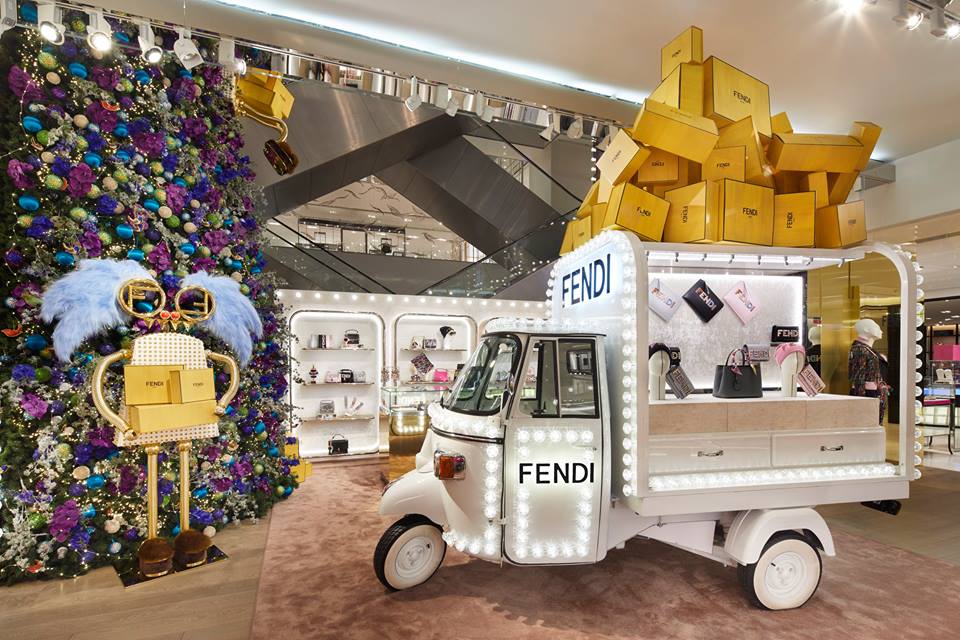
Outlook
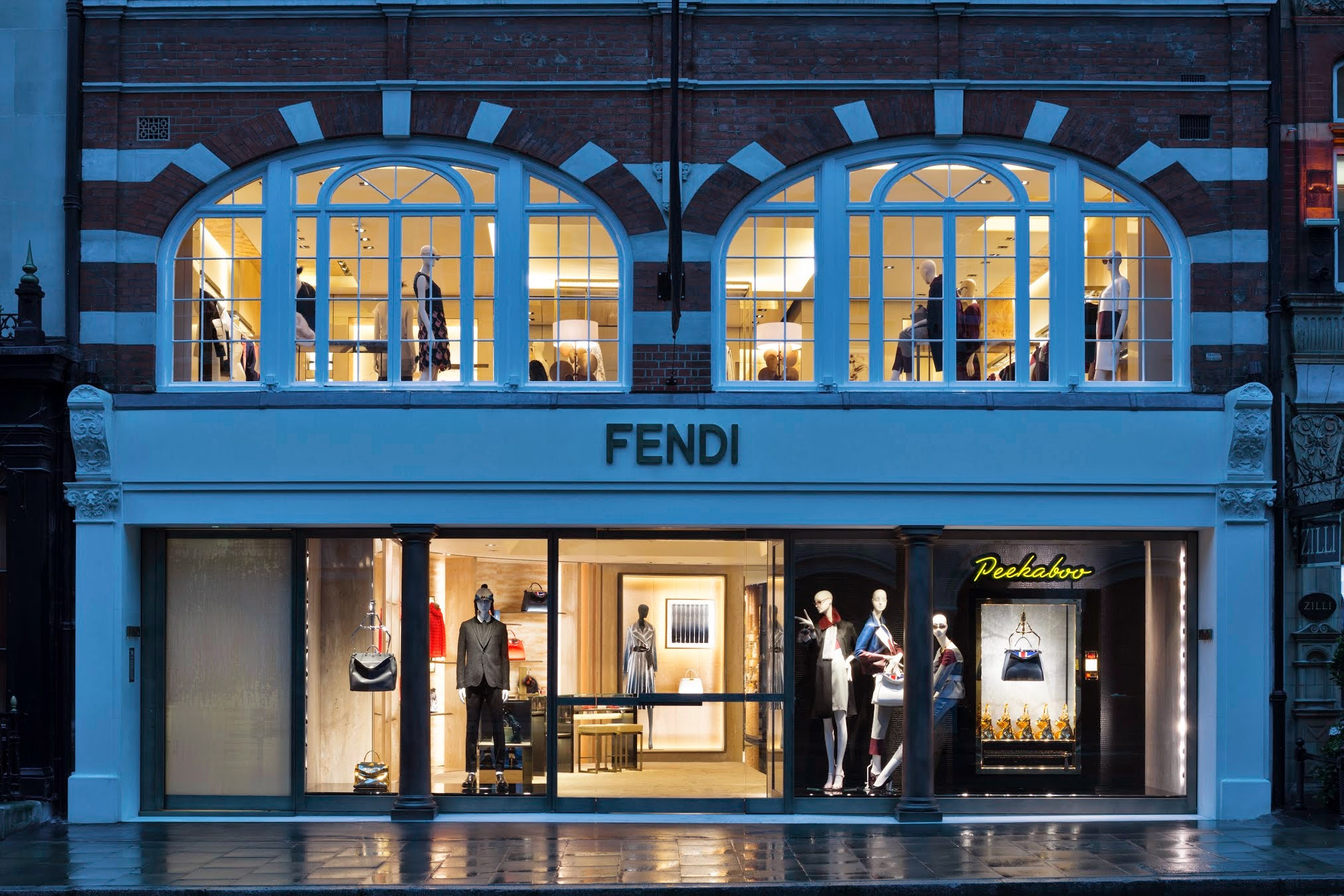
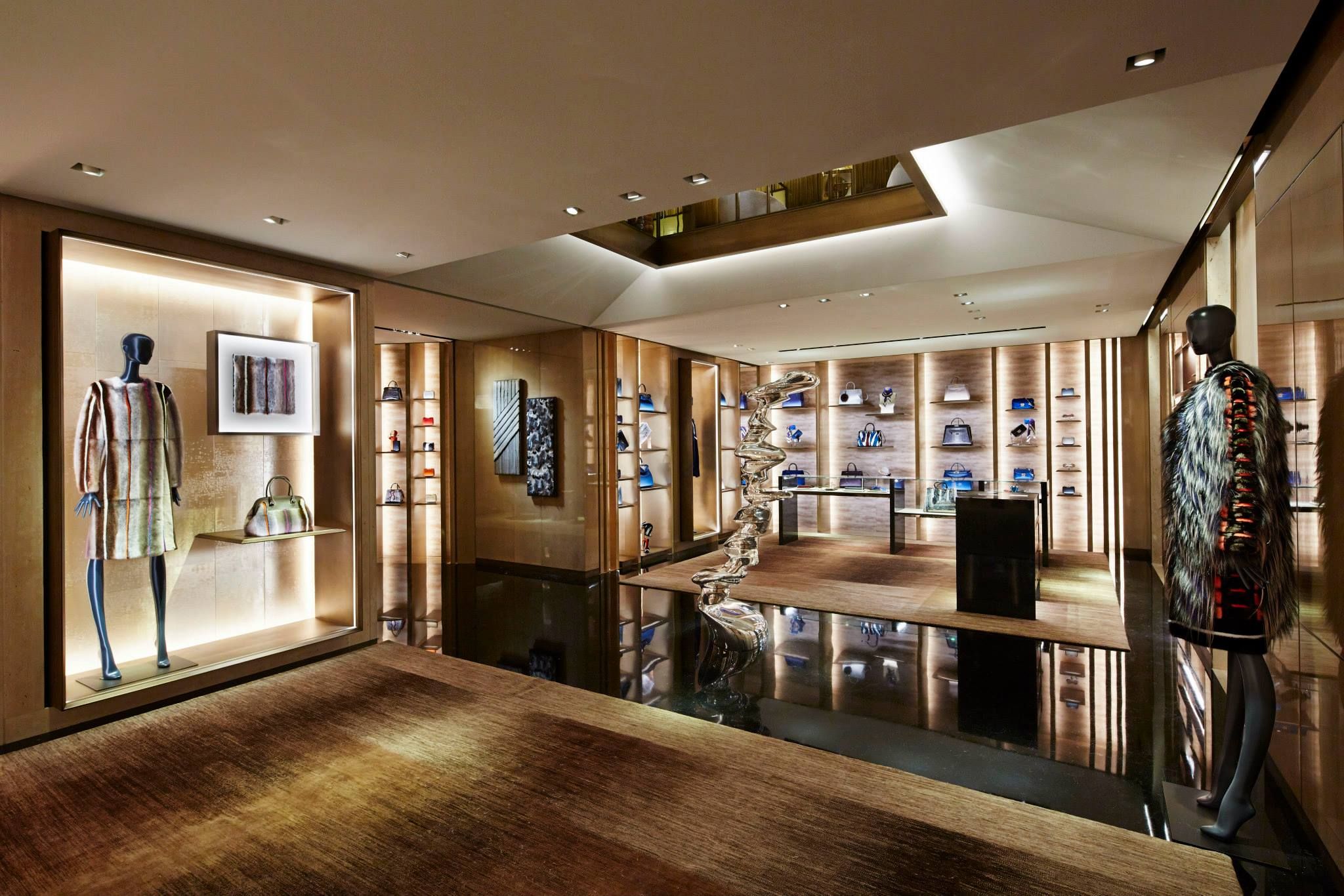
The Fendi boutique concept has evolved as the House too has progressed. As it prepares to celebrate 90 years in business, the network of stores is changing to accentuate and celebrate the heritage and contemporaneity of the Rome-based brand.
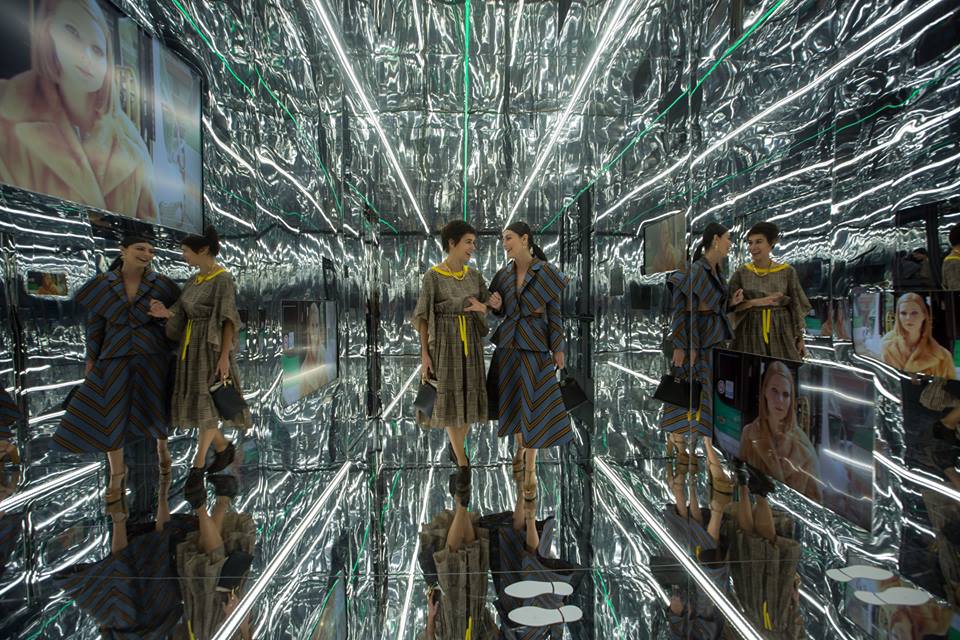
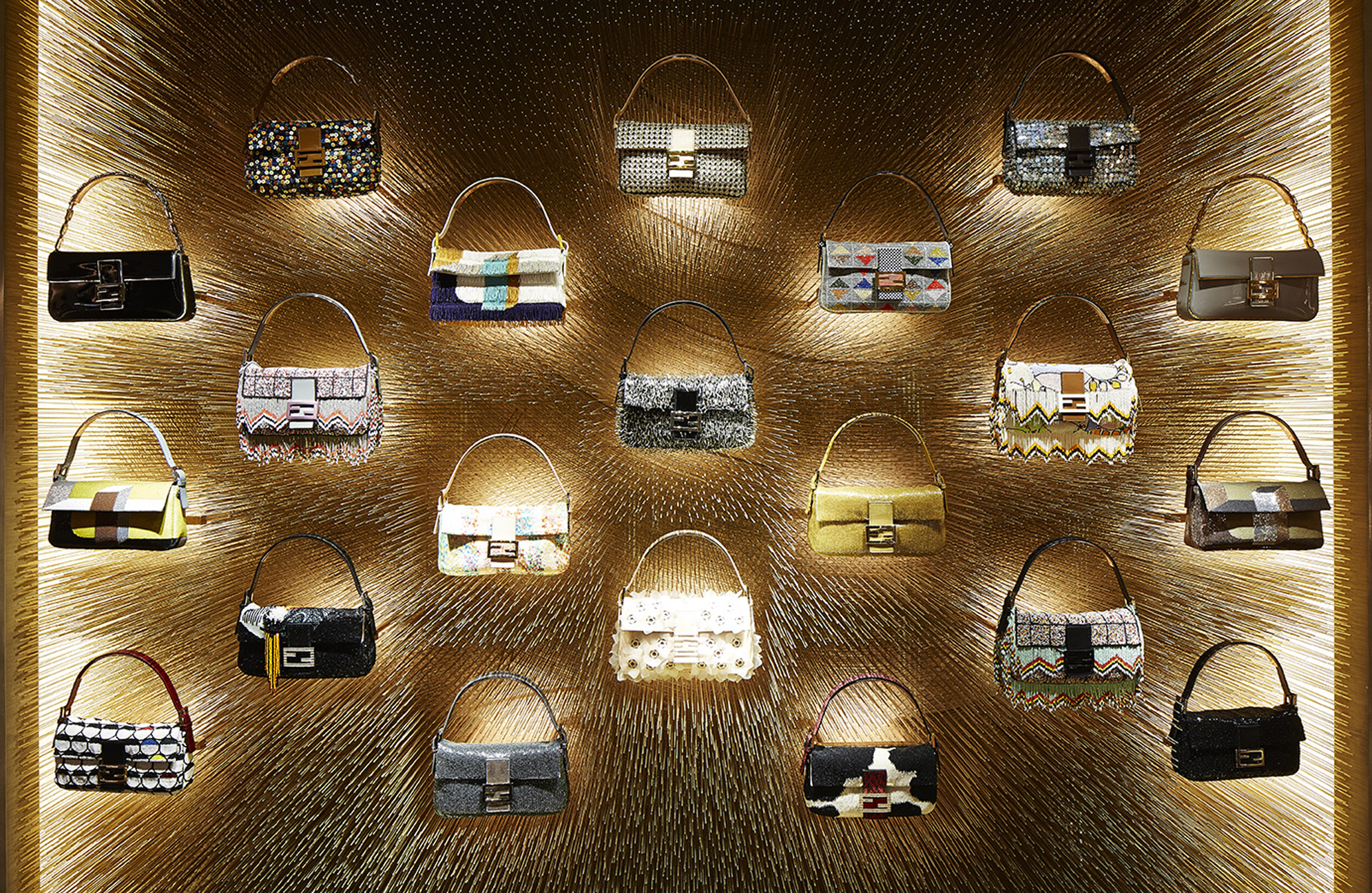
Each of these prestigious boutiques on the world’s most beautiful streets contains a wall of baguette bags with some 40,000 bronze spikes.
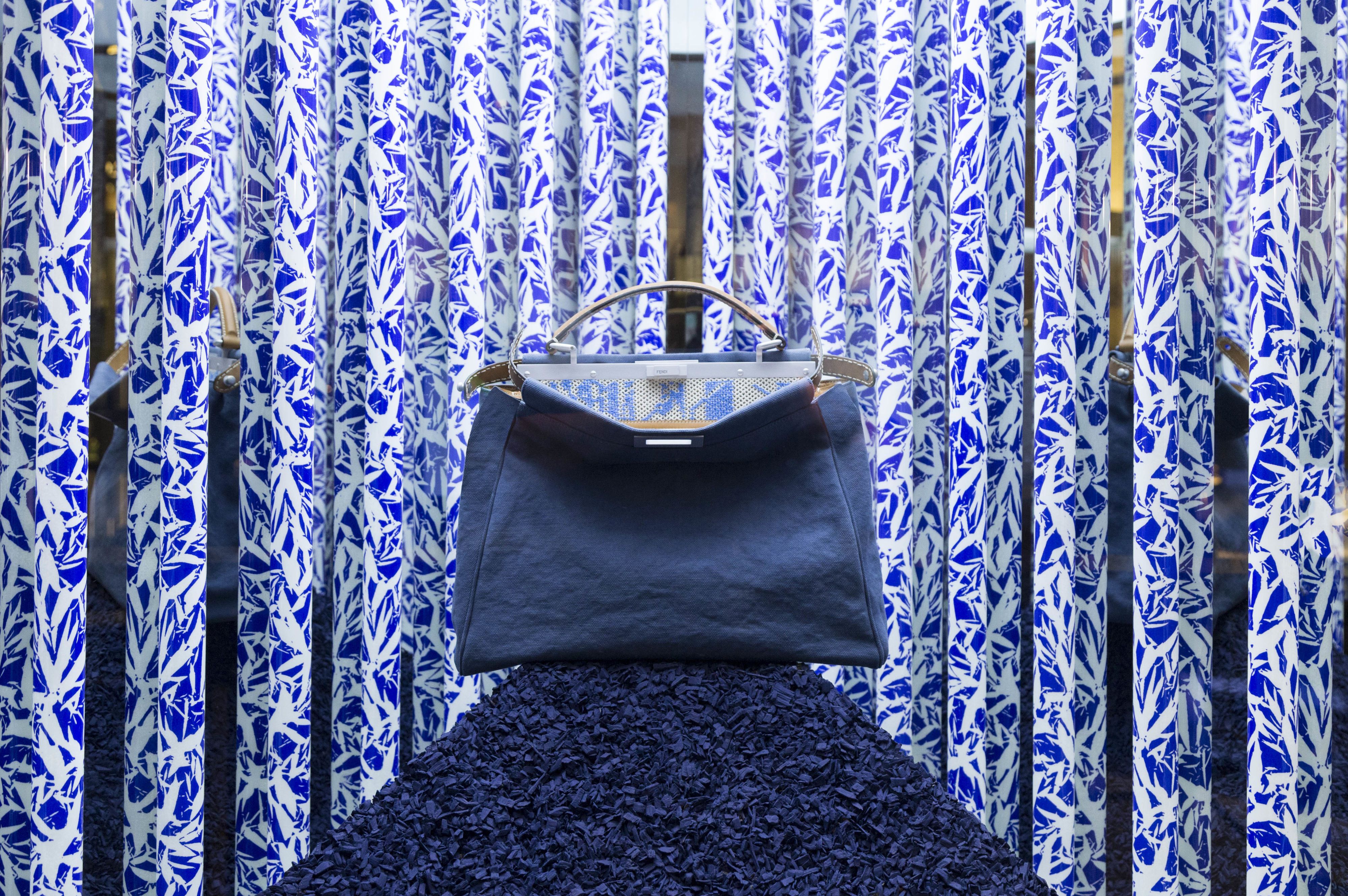
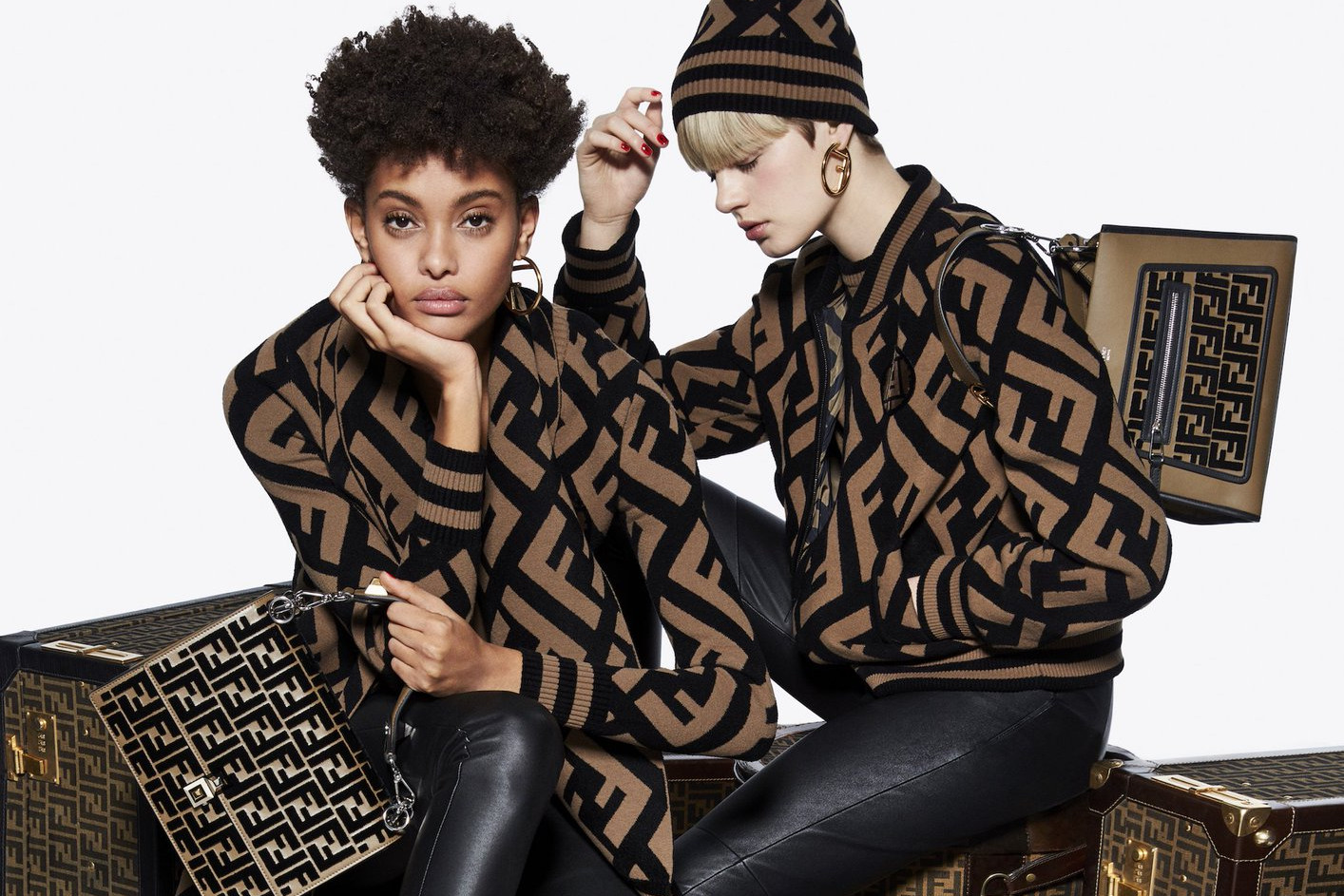
A spectacular installation to showcase the first it-bag in the world, which was created by Silvia Venturini Fendi in 1997 and remains as iconic today.
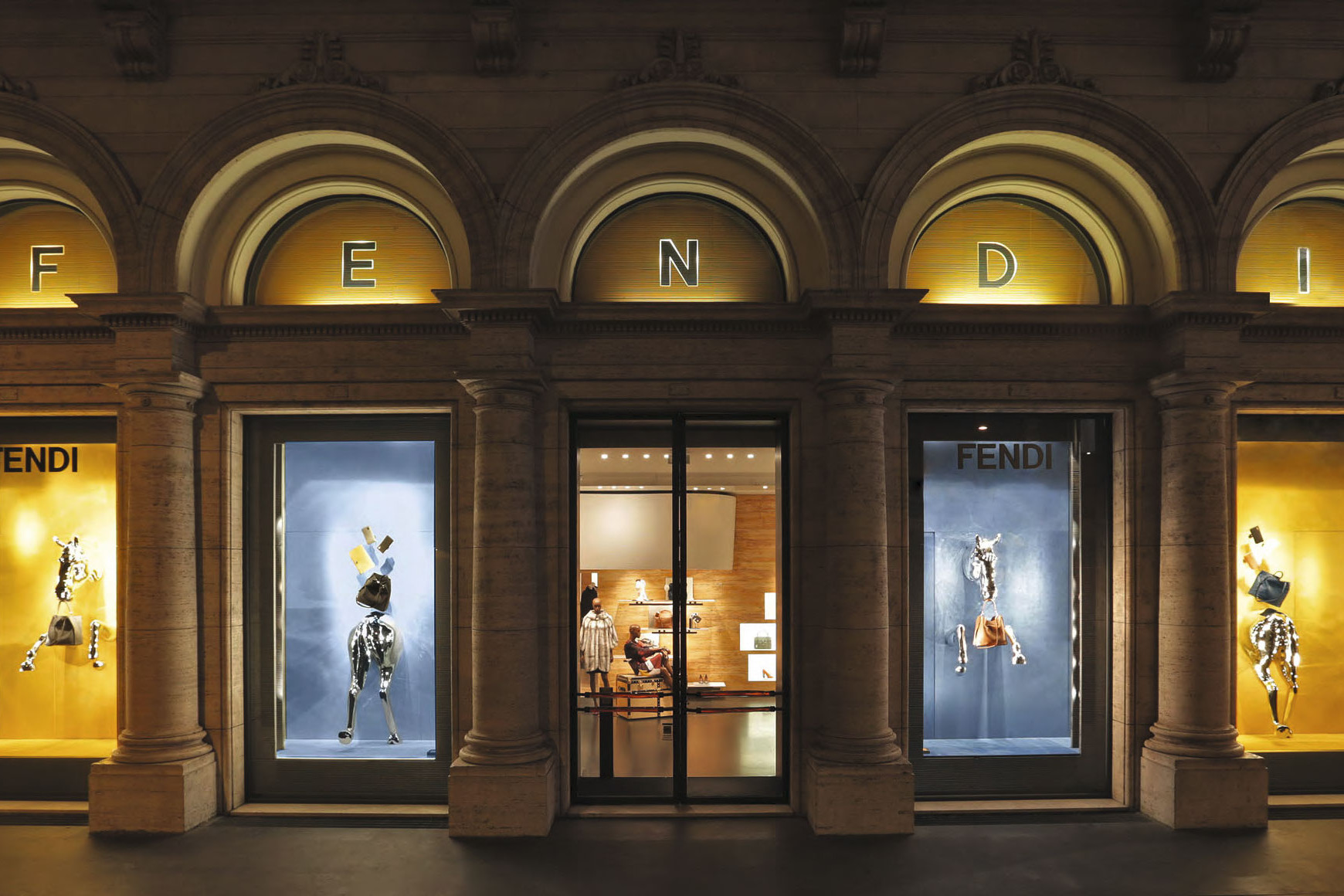
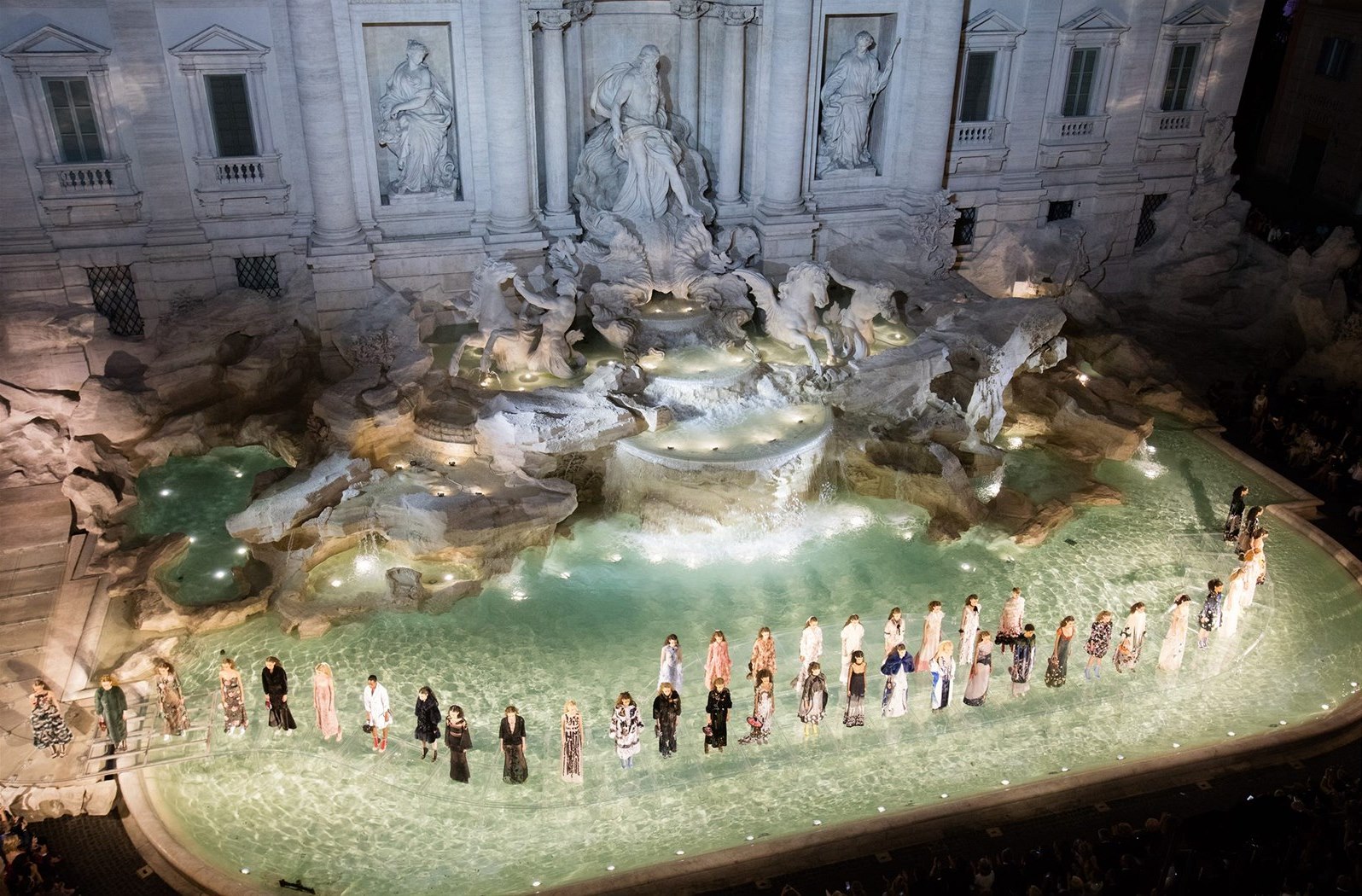
Products Fendi
Fendi
Founded in 1925 in Rome

Identity

To explain the Fendi fashion house a mathematical theorem would perhaps be necessary, in which tradition and innovation, craftsmanship and freedom of creativity are wisely dosed as a guarantee of a success never taken for granted, following the idea that nothing is impossible. - Silvia Venturini Fendi


The Fendi adventure began in 1925 on Via del Plebiscito, a busy street whose location in the heart of Rome made it a main thoroughfare used by the transalpine aristocracy.


Adele and Edoardo Fendi opened a small and medium leather goods shop and set up what was then a secret fur workshop.


The shop was set in an area through which nobility would ride on their way to excursions by the sea, and Adele, watching the passing carriages, was inspired by the horse’s beautiful saddles and bridles to create a line of handbags using those same techniques.


Success came quickly, already in the 30s the finest furs and leather accessories of the Fendi laboratory reached international fame thanks to the rich ladies in visit to the Eternal City who had a penchant for Italian craftsmanship.


The success was confirmed when their five daughters, Paola, Anna, Franca, Carla and Alda, decided to get involved in the family business bringing new energy and ideas.


Nicknamed the five fingers of the hand, it was they who, in 1965, invited a young German designer to join the House. His name: Karl Lagerfeld!


A year later came the double F logo originally used as invisible lining for luggage, which today has become a symbol of luxury and exhibited with pride among the most significant examples of the phenomenon of logo mania.


After revolutionizing how to wear fur by fully reinterpreting it, transforming it into a fashionable, soft, light item of clothing, Karl Lagerfeld launched the House’s ready-to-wear collection in 1977. He still provides artistic direction alongside Silvia Venturini Fendi, who represents the third generation of the family and is in charge of accessories, menswear and kidswear.


In the ‘80s Fendi emerged as a global lifestyle brand, in 1989 Fendi Casa was founded, with the aim of decorating the environments with the same perspective of the fashion lines.


Foxes, mink, sable are so transposed into plaids and cushions, characterized by fashion details like the double F logo or the characteristic Spy Bag closing.

 y.jpg)
Forever associated with the Fendi image, the legendary Baguette bag and the timeless Peekaboo have helped to shape the House’s influence.


It is a reputation that even went beyond the borders of the Earth when Fendi put on a fashion show atop the Great Wall of China on October 19, 2007, making this breathtaking event the first show visible from the Moon!


Icon


A House specialty since it was founded in 1925, working with fur is a part of Fendi's historic range of expression, being the only brand to have an inhouse fur atelier. From a social status symbol to a fashion phenomenon, this elegant staple changed under the successive guidance of Adele and Edoardo's five daughters and Karl Lagerfeld since 1965.


Outlook


The Fendi boutique concept has evolved as the House too has progressed. As it prepares to celebrate 90 years in business, the network of stores is changing to accentuate and celebrate the heritage and contemporaneity of the Rome-based brand.


Each of these prestigious boutiques on the world’s most beautiful streets contains a wall of baguette bags with some 40,000 bronze spikes.


A spectacular installation to showcase the first it-bag in the world, which was created by Silvia Venturini Fendi in 1997 and remains as iconic today.


Products Fendi
-
Fendi - Tropical Shine - Green & Pink Aviator Sunglasses - Sunglasses - Fendi...
Tropical Shine sunglasses with an oversized aviator shape. The model has a double bridge and metal rods with an iconic angled shape. Made of acetate with a dégradé effect in shades of green and pink. The metal rods with ruthenium finish are enriched by a green color block detail, personalized with the silver Fendi logo. Brown gradient lenses.
255,00 € 300,00 € -15%Reduced price ! -
Fendi - Tropical Shine - Crystal & Black Aviator Oversize Sunglasses -...
Tropical Shine sunglasses with an oversized aviator shape. The model is illuminated by a sophisticated mix of Caribbean tones, with a double bridge and metal rods with an iconic angled shape. Made of transparent and black acetate with a dégradé effect. The rods with ruthenium finish are enriched by a black color block detail and personalized with the...
314,50 € 370,00 € -15%Reduced price ! -
Fendi - Tropical Shine - Rose & Red Aviator Oversize Sunglasses - Sunglasses...
Tropical Shine sunglasses with an oversized aviator shape. The model is illuminated by a sophisticated mix of Caribbean tones, with a double bridge and metal rods with an iconic angled shape. Made of transparent acetate with a dégradé effect in shades of peach pink and red. The metal rods with golden finish are enriched by a red color block detail and...
314,50 € 370,00 € -15%Reduced price ! -
Fendi - F is Fendi - Gold Square Oversize Sunglasses - Sunglasses - Fendi...
F is Fendi sunglasses with an oversized squared shape, made of gold-colored metal. The model has a sophisticated and feminine design, emphasized by the edges in black and brown acetate. The thin temples are decorated with the new Fendi logo, also shown on the terminals. Brown gradient lenses with gold mirrored effect.
314,50 € 370,00 € -15%Reduced price ! -
Fendi - F is Fendi - Copper Square Oversize Sunglasses - Sunglasses - Fendi...
F is Fendi sunglasses with an oversized squared shape, made of palladium-colored metal. The model has a sophisticated and feminine design, emphasized by the edges in pink and white dégradé acetate. The thin temples are decorated with the new Fendi logo, the new Fendi logo is shown on the terminals. Brown and pink gradient lenses with mirrored effect.
314,50 € 370,00 € -15%Reduced price ! -
Fendi - F is Fendi - Gold Cat Eye Oversize Sunglasses - Sunglasses - Fendi...
F is Fendi sunglasses with an oversized cat-eye shape, made of gold-colored metal. The model has a sophisticated and feminine design, emphasized by the edges in black acetate. The thin temples are decorated with the new Fendi logo, also showing on the terminals. Blue and gray gradient lenses.
314,50 € 370,00 € -15%Reduced price ! -
Fendi - F is Fendi - Copper Cat Eye Oversize Sunglasses - Sunglasses - Fendi...
F is Fendi sunglasses with an oversized cat-eye shape, made of palladium-colored metal. The model has a sophisticated and feminine design, emphasized by the edges in pink and white dégradé acetate. The thin temples are decorated with the new Fendi logo, also shown on the terminals. Brown and pink gradient lenses with mirrored effect.
314,50 € 370,00 € -15%Reduced price ! -
Fendi - F is Fendi - Copper Cat Eye Oversize Sunglasses - Sunglasses - Fendi...
F is Fendi sunglasses with an oversized cat-eye shape, made of silver-colored metal. The model has a sophisticated and feminine design, emphasized by the acetate edges in two shades of red. The thin temples are decorated with the new Fendi logo, also shown on the terminals. Brown gradient lenses.
314,50 € 370,00 € -15%Reduced price ! -
Fendi - Can Eye - Gold Square Oversize Sunglasses - Sunglasses - Fendi Eyewear
Can Eye sunglasses with a characteristic square and oversize line. The metal frame with golden finish is finished with a double contrasting profile and embellished with small ruthenium studs. Gold-finish temples with angled cut badge, complete with engraved Fendi logo. Gray shaded lenses, mirrored in gold.
382,50 € 450,00 € -15%Reduced price ! -
Fendi - Can Eye - Silver Square Oversize Sunglasses - Sunglasses - Fendi Eyewear
Can Eye sunglasses with a characteristic square and oversize line. The metal frame with silver finish is finished with a double contrasting profile and embellished with small gold and ruthenium studs. Gold-finish temples with angled cut badge, complete with engraved Fendi logo. Gray shaded lenses, mirrored in silver.
382,50 € 450,00 € -15%Reduced price ! -
Fendi - Can Eye - SS 2017 Bicolor Square Oversize Sunglasses - Sunglasses -...
Can Eye sunglasses with a characteristic square and oversize line. The metal frame with golden finish is embellished with matt black profiles and small shiny black studs that illuminate the look. Auctions with an angled cut badge, complete with engraved Fendi logo. Graduated brown-pink lenses, mirrored in gold.
382,50 € 450,00 € -15%Reduced price ! -
Fendi - Can Eye - SS 2017 Bicolor Light Square Oversize Sunglasses -...
Can Eye sunglasses with a characteristic square and oversize line. The pink peony metal frame is finished with a double contrasting profile and embellished with small mango-colored studs. Gold-finish temples with angled cut badge, complete with engraved Fendi logo. Brown gradient lenses, mirrored in silver.
382,50 € 450,00 € -15%Reduced price ! -
Fendi - Can Eye - Blue Pentagonal Oversize Sunglasses - Sunglasses - Fendi...
Can Eye sunglasses with an original pentagon shape, re-interpreted for a feminine and modern allure. The blue metal frame, very light and comfortable to wear, is embellished with small gold and ruthenium studs. The rods with an angled cutting badge are completed by an engraved Fendi logo. Blue gradient lenses.
314,50 € 370,00 € -15%Reduced price ! -
Fendi - Can Eye - Black Pentagonal Oversize Sunglasses - Sunglasses - Fendi...
Can Eye sunglasses with an original pentagon shape, reinterpreted for a feminine and modern allure. The black metal frame, very light and comfortable to wear, is embellished with small tone-on-tone studs. The rods with an angled cutting badge are completed by an engraved Fendi logo. Gray gradient lenses.
314,50 € 370,00 € -15%Reduced price ! -
Fendi - Can Eye - Rose Gold Pentagonal Oversize Sunglasses - Sunglasses -...
Can Eye sunglasses with an original pentagon shape, re-interpreted for a feminine and modern allure. The metal frame with pink gold finish, very light and comfortable to wear, is embellished with small shiny pink stones and scalloped edge. The rods with an angled cutting badge are completed by an engraved Fendi logo. Brown and pink gradient lenses.
314,50 € 370,00 € -15%Reduced price ! -
Fendi - Ribbons and Pearls - Ruthenium Round Oversize Sunglasses - Sunglasses...
Ribbons and Pearls sunglasses with an oversized round shape. The metal frame with dark ruthenium finish is light and hyperfeminine, embellished with Swarovski pearls in different sizes. The thin temples are personalized with the Fendi logo engraved, the new Fendi logo is shown on the terminals. Gray gradient lenses.
340,00 € 400,00 € -15%Reduced price ! -
Fendi - Ribbons and Pearls - Bronze Round Oversize Sunglasses - Sunglasses -...
Ribbons and Pearls sunglasses with an oversized round shape. The bronze metal frame is light and hyperfeminine, embellished with Swarovski pearls in different sizes. The thin temples are personalized with the Fendi logo engraved and feature the round terminal in the shape of the new Fendi logo. Green gradient lenses with silver mirrored effect.
340,00 € 400,00 € -15%Reduced price ! -
Fendi - Ribbons and Pearls - Black Cat Eye Oversize Sunglasses - Sunglasses -...
Ribbons and Pearls sunglasses that incorporate the cut of the iconic "Blink" shape, with a black acetate frame. The Swarovski pearls applied on the front in three different sizes embellish the innovative and feminine design of the model. Fendi logo engraved. Gray gradient lenses.
331,50 € 390,00 € -15%Reduced price !Sold Out - Not Available -
Fendi - Ribbons and Pearls - Black Mask Oversize Sunglasses - Sunglasses -...
Ribbons and Pearls sunglasses in black acetate, with a mask lens with a sporty-chic appeal. The Swarovski pearls applied on the front in three different sizes embellish the design. Auctions with engraved Fendi logo. Gray lenses.
331,50 € 390,00 € -15%Reduced price ! -
Fendi - F is Fendi - White and Brown Cat Eye Sunglasses - Sunglasses - Fendi...
F is Fendi sunglasses with cat-eye frame in white acetate. The molded rods in optyl have a wide and modern shape, completed by the new metal Fendi logo with golden finish.
238,00 € 280,00 € -15%Reduced price ! -
Fendi - F is Fendi - Black and Brown Cat Eye Sunglasses - Sunglasses - Fendi...
F is Fendi sunglasses with cat-eye frame in black acetate with contrasting brown optyl rod. New Fendi logo in metal with silver-colored finish. Gray lenses.
238,00 € 280,00 € -15%Reduced price !



